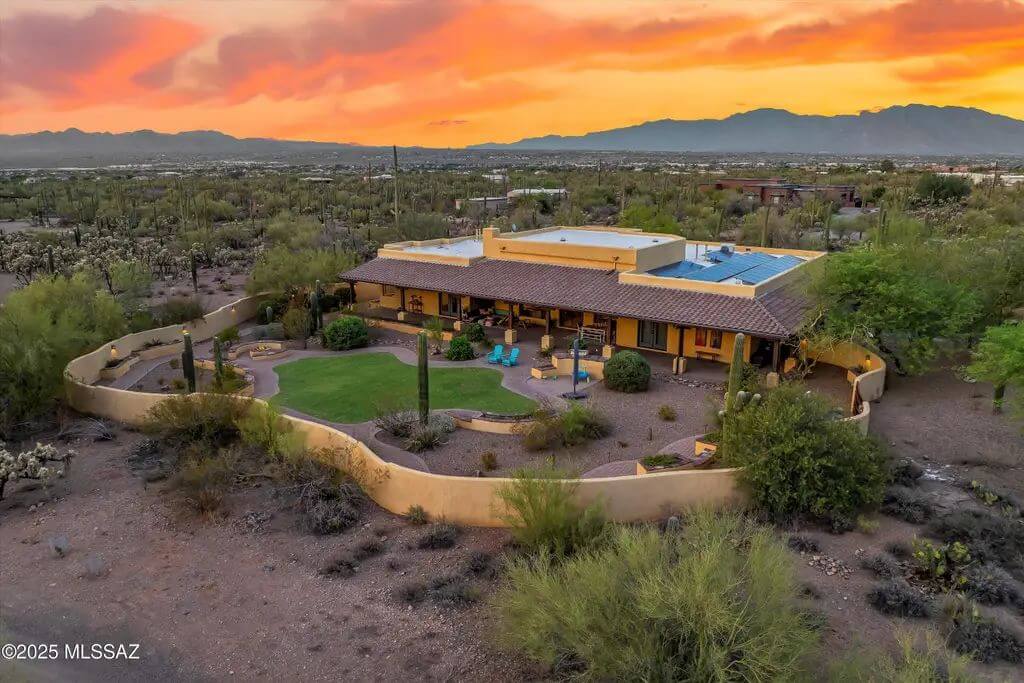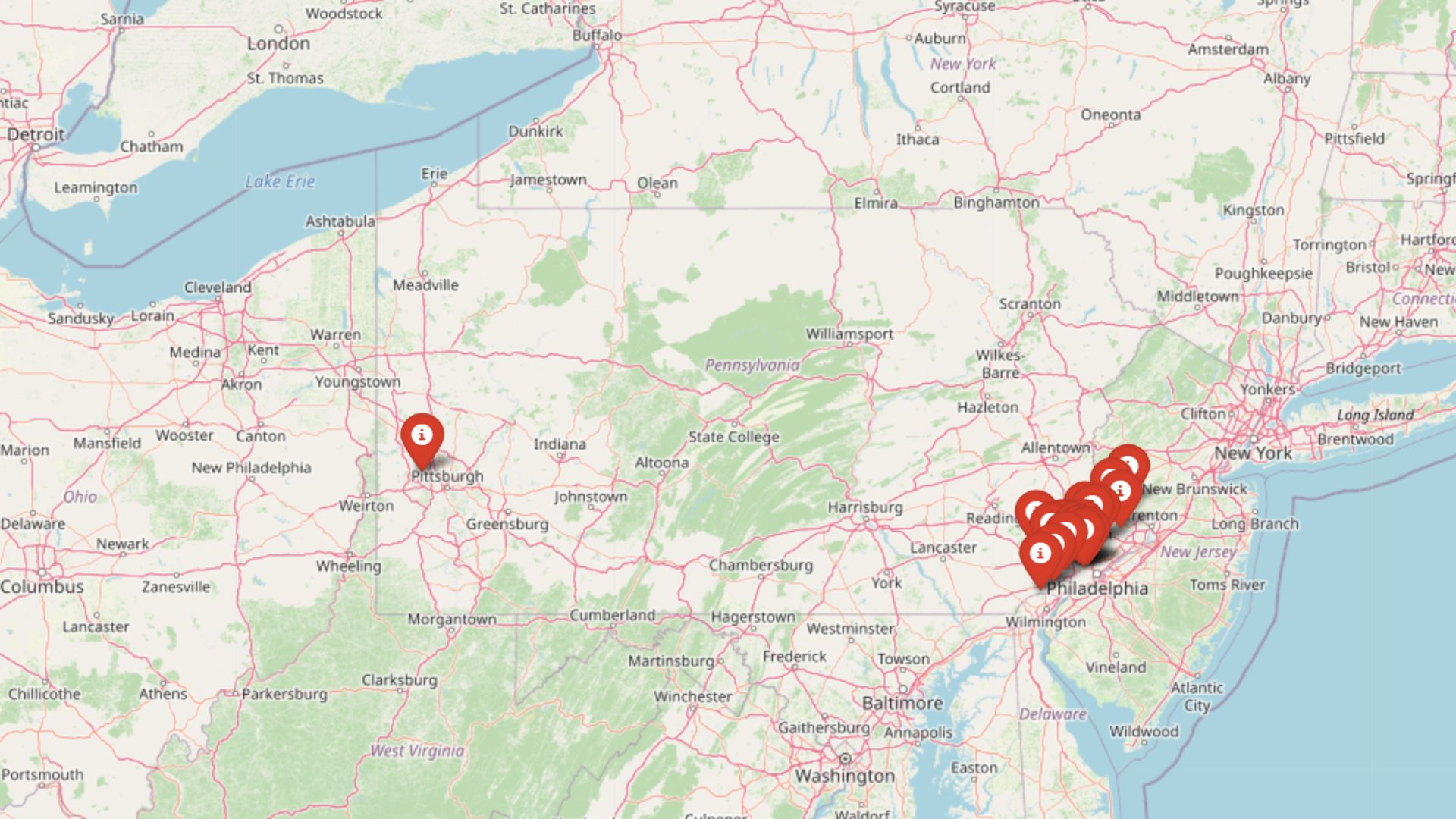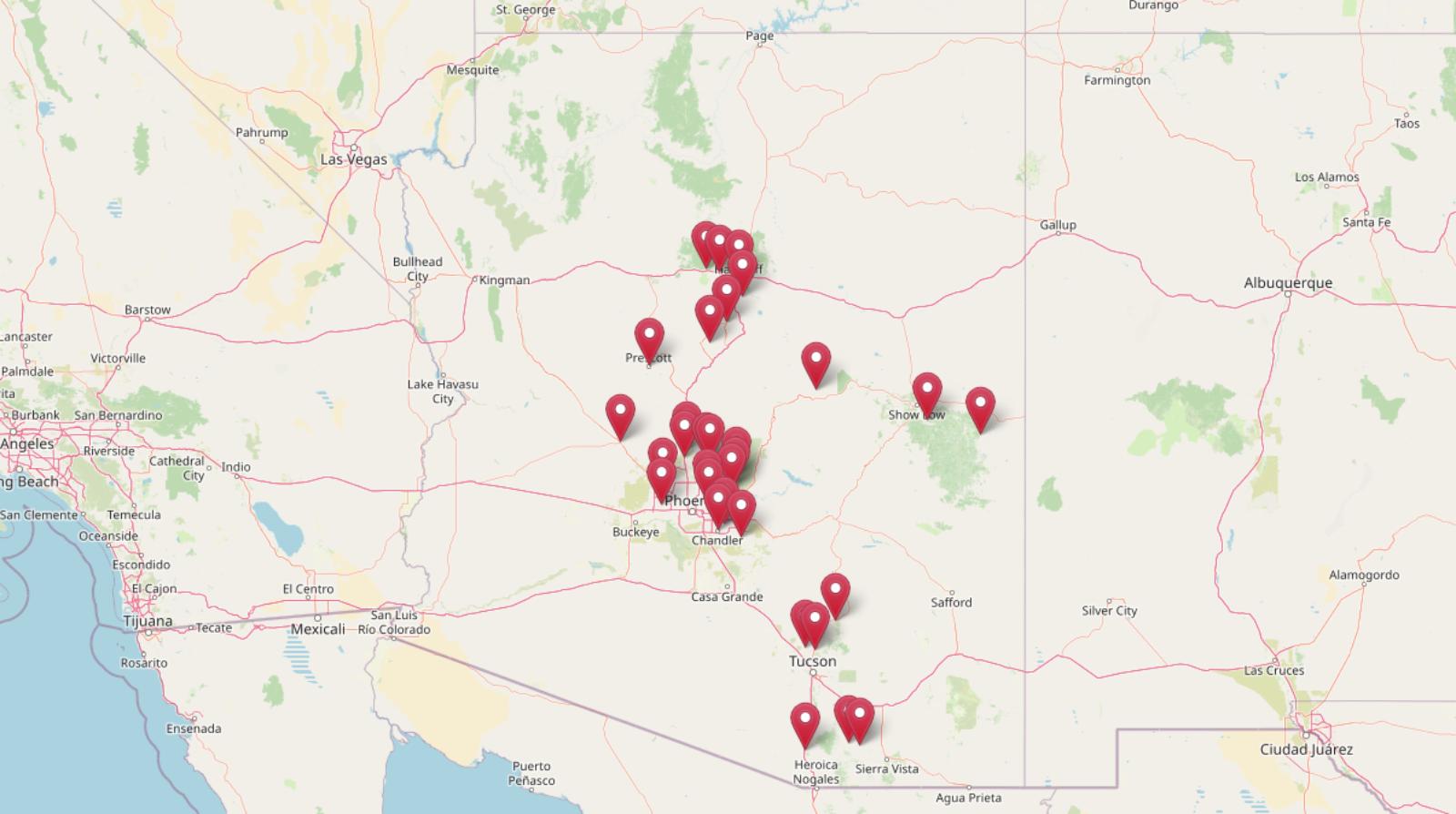
Arizona’s most expensive towns are no longer just about luxury golf courses and resort views. According to the Zillow Home Value Index, 31 communities now rank among the state’s highest-priced housing markets—many with median home values nearing $1 million. From transformed mining towns to sleek desert suburbs, these places reflect years of boom-and-bust cycles that have reshaped what it costs to call Arizona home.
31. Oro Valley – 89.6% Home Price Increase Since 2010

- 2010: $273,622
- 2011: $247,674 (−$25,947, −9.48% from previous year)
- 2012: $250,119 (+$2,445, +0.99% from previous year)
- 2013: $269,136 (+$19,016, +7.60% from previous year)
- 2014: $279,949 (+$10,813, +4.02% from previous year)
- 2015: $282,075 (+$2,126, +0.76% from previous year)
- 2016: $290,010 (+$7,935, +2.81% from previous year)
- 2017: $314,447 (+$24,438, +8.43% from previous year)
- 2018: $324,236 (+$9,789, +3.11% from previous year)
- 2019: $338,675 (+$14,439, +4.45% from previous year)
- 2020: $358,212 (+$19,536, +5.77% from previous year)
- 2021: $427,613 (+$69,401, +19.37% from previous year)
- 2022: $517,415 (+$89,802, +21.00% from previous year)
- 2023: $508,696 (−$8,720, −1.69% from previous year)
- 2024: $526,306 (+$17,611, +3.46% from previous year)
- 2025: $518,966 (−$7,341, −1.39% from previous year)
Oro Valley’s housing market demonstrates the classic Arizona pattern of steady growth punctuated by explosive gains during the pandemic era. The community experienced its most dramatic price surge between 2021 and 2022, when values jumped from around $428,000 to over $517,000 in just two years. Recent market corrections have brought prices down slightly from their 2024 peak, but current values still represent nearly a 90% increase from 2010 levels.
Oro Valley – Foothills Luxury Living

Nestled in the Santa Catalina foothills north of Tucson, Oro Valley has evolved into one of southern Arizona’s premier residential communities. The town’s strategic location offers residents stunning mountain views, access to world-class golf courses, and proximity to both Tucson’s urban amenities and outdoor recreation opportunities. This combination of natural beauty and suburban convenience has consistently attracted affluent buyers willing to pay premium prices.
The community’s reputation for excellent schools, low crime rates, and well-maintained neighborhoods has made it particularly attractive to families and retirees. Oro Valley’s master-planned developments feature resort-style amenities, while the surrounding Sonoran Desert provides hiking trails and scenic vistas that enhance property values. The town’s careful growth management and zoning policies have helped maintain its upscale character, contributing to sustained demand and price appreciation.
30. Tubac – 93.7% Home Price Increase Since 2010

- 2010: $271,343
- 2011: $244,343 (−$27,000, −9.95% from previous year)
- 2012: $255,020 (+$10,678, +4.37% from previous year)
- 2013: $252,113 (−$2,907, −1.14% from previous year)
- 2014: $260,892 (+$8,779, +3.48% from previous year)
- 2015: $283,312 (+$22,419, +8.59% from previous year)
- 2016: $288,785 (+$5,473, +1.93% from previous year)
- 2017: $300,249 (+$11,464, +3.97% from previous year)
- 2018: $312,721 (+$12,472, +4.15% from previous year)
- 2019: $331,577 (+$18,855, +6.03% from previous year)
- 2020: $348,992 (+$17,416, +5.25% from previous year)
- 2021: $435,707 (+$86,715, +24.85% from previous year)
- 2022: $512,811 (+$77,104, +17.70% from previous year)
- 2023: $508,734 (−$4,077, −0.80% from previous year)
- 2024: $538,245 (+$29,511, +5.80% from previous year)
- 2025: $525,439 (−$12,806, −2.38% from previous year)
Tubac’s housing market shows remarkable resilience and growth, with current median prices approaching $525,000 after starting the decade at just over $271,000. The community experienced significant pandemic-era gains, with values climbing nearly 25% in 2021 alone. While recent years have seen some market cooling, the long-term trajectory reflects strong demand for this unique desert community.
Tubac – Artists’ Colony Turned Investment Magnet

Located about 45 miles south of Tucson near the Mexican border, Tubac holds the distinction of being Arizona’s first European settlement and has transformed into a renowned artists’ colony. The historic presidio and thriving arts scene attract visitors from around the world, while the community’s adobe architecture and desert setting create an authentic southwestern atmosphere that commands premium prices from buyers seeking unique properties.
Tubac’s appeal extends beyond its artistic heritage to include proximity to excellent golf courses, the Santa Rita Mountains, and the charming town of Tumacacori with its historic mission. The area’s limited housing inventory, combined with its cultural significance and natural beauty, has created a competitive market where well-positioned properties can appreciate rapidly. Many homes feature custom southwestern designs, guest casitas, and expansive lots that take advantage of the dramatic desert landscape.
29. Bellemont – 180.6% Home Price Increase Since 2013

- 2013: $189,089
- 2014: $211,534 (+$22,445, +11.87% from previous year)
- 2015: $226,335 (+$14,800, +7.00% from previous year)
- 2016: $244,511 (+$18,177, +8.03% from previous year)
- 2017: $277,314 (+$32,803, +13.42% from previous year)
- 2018: $301,940 (+$24,626, +8.88% from previous year)
- 2019: $319,829 (+$17,888, +5.92% from previous year)
- 2020: $339,461 (+$19,632, +6.14% from previous year)
- 2021: $417,915 (+$78,454, +23.11% from previous year)
- 2022: $512,670 (+$94,755, +22.67% from previous year)
- 2023: $491,968 (−$20,702, −4.04% from previous year)
- 2024: $518,652 (+$26,684, +5.42% from previous year)
- 2025: $530,458 (+$11,807, +2.28% from previous year)
Bellemont’s housing market represents one of Arizona’s most dramatic success stories, with median home values nearly tripling since 2013. The community has experienced consistent year-over-year growth, with particularly strong gains during 2021 and 2022 when prices jumped from around $340,000 to over $512,000. Current values above $530,000 reflect the area’s transformation from an affordable mountain community to a premium destination.
Bellemont – Mountain Gateway Community

Situated along Interstate 40 west of Flagstaff at an elevation of approximately 7,000 feet, Bellemont offers residents a unique combination of mountain living and highway accessibility. The community serves as a gateway to both the Grand Canyon and Flagstaff, making it attractive to those seeking cooler climates and outdoor recreation opportunities while maintaining reasonable commuting distance to employment centers.
Bellemont’s rapid price appreciation reflects the broader trend of buyers seeking alternatives to crowded urban areas, particularly during the pandemic when remote work made mountain communities more viable. The area’s forested setting, clean air, and four-season climate appeal to buyers from Phoenix and other desert cities looking for weekend retreats or permanent relocations. Limited housing inventory and the community’s strategic location have created intense competition among buyers, driving sustained price growth.
28. Cornville – 172.1% Home Price Increase Since 2010

- 2010: $195,597
- 2011: $180,885 (−$14,711, −7.52% from previous year)
- 2012: $186,692 (+$5,807, +3.21% from previous year)
- 2013: $221,885 (+$35,194, +18.85% from previous year)
- 2014: $243,952 (+$22,067, +9.95% from previous year)
- 2015: $263,912 (+$19,960, +8.18% from previous year)
- 2016: $286,551 (+$22,638, +8.58% from previous year)
- 2017: $294,298 (+$7,747, +2.70% from previous year)
- 2018: $310,579 (+$16,281, +5.53% from previous year)
- 2019: $338,818 (+$28,239, +9.09% from previous year)
- 2020: $365,332 (+$26,515, +7.83% from previous year)
- 2021: $442,071 (+$76,739, +21.01% from previous year)
- 2022: $528,449 (+$86,378, +19.54% from previous year)
- 2023: $501,339 (−$27,110, −5.13% from previous year)
- 2024: $528,216 (+$26,876, +5.36% from previous year)
- 2025: $532,333 (+$4,117, +0.78% from previous year)
Cornville’s housing market exemplifies the Verde Valley’s transformation from an agricultural region to a sought-after residential destination. Starting from under $196,000 in 2010, median home values have more than doubled to exceed $532,000 by 2025. The community experienced particularly strong growth during the 2013-2016 period and again during the pandemic years, when annual increases exceeded 20%.
Cornville – Verde Valley’s Rural Charm

Located in the heart of the Verde Valley between Sedona and Cottonwood, Cornville maintains its rural character while benefiting from proximity to some of Arizona’s most desirable destinations. The unincorporated community sits along Oak Creek, providing residents with riparian areas and agricultural land that create a pastoral setting rare in Arizona. This combination of natural beauty and strategic location has made Cornville increasingly attractive to buyers seeking larger lots and country living.
The area’s appeal stems from its central location within the Verde Valley, offering easy access to Sedona’s red rocks, Flagstaff’s mountains, and the wine country of Cottonwood and Jerome. Many properties feature horse facilities, wells, and expansive acreage that appeal to buyers relocating from urban areas. Cornville’s rural zoning allows for agricultural uses and larger lot sizes, creating a lifestyle that commands premium prices from buyers willing to pay for space and privacy.
27. Oracle – 142.2% Home Price Increase Since 2010

- 2010: $220,072
- 2011: $211,988 (−$8,084, −3.67% from previous year)
- 2012: $203,574 (−$8,413, −3.97% from previous year)
- 2013: $227,959 (+$24,385, +11.98% from previous year)
- 2014: $243,950 (+$15,991, +7.01% from previous year)
- 2015: $252,839 (+$8,889, +3.64% from previous year)
- 2016: $271,755 (+$18,915, +7.48% from previous year)
- 2017: $280,500 (+$8,745, +3.22% from previous year)
- 2018: $297,595 (+$17,095, +6.09% from previous year)
- 2019: $332,144 (+$34,548, +11.61% from previous year)
- 2020: $355,122 (+$22,978, +6.92% from previous year)
- 2021: $448,296 (+$93,174, +26.24% from previous year)
- 2022: $549,409 (+$101,113, +22.55% from previous year)
- 2023: $525,362 (−$24,048, −4.38% from previous year)
- 2024: $546,939 (+$21,578, +4.11% from previous year)
- 2025: $532,973 (−$13,966, −2.55% from previous year)
Oracle’s housing market demonstrates steady long-term appreciation with explosive growth during the pandemic era. After bottoming out around $203,000 in 2012, home values have climbed consistently to exceed $532,000 by 2025. The community saw its most dramatic gains in 2021 and 2022, when prices jumped by more than 26% and 22% respectively, before settling into a more moderate growth pattern.
Oracle – Desert Mountain Sanctuary
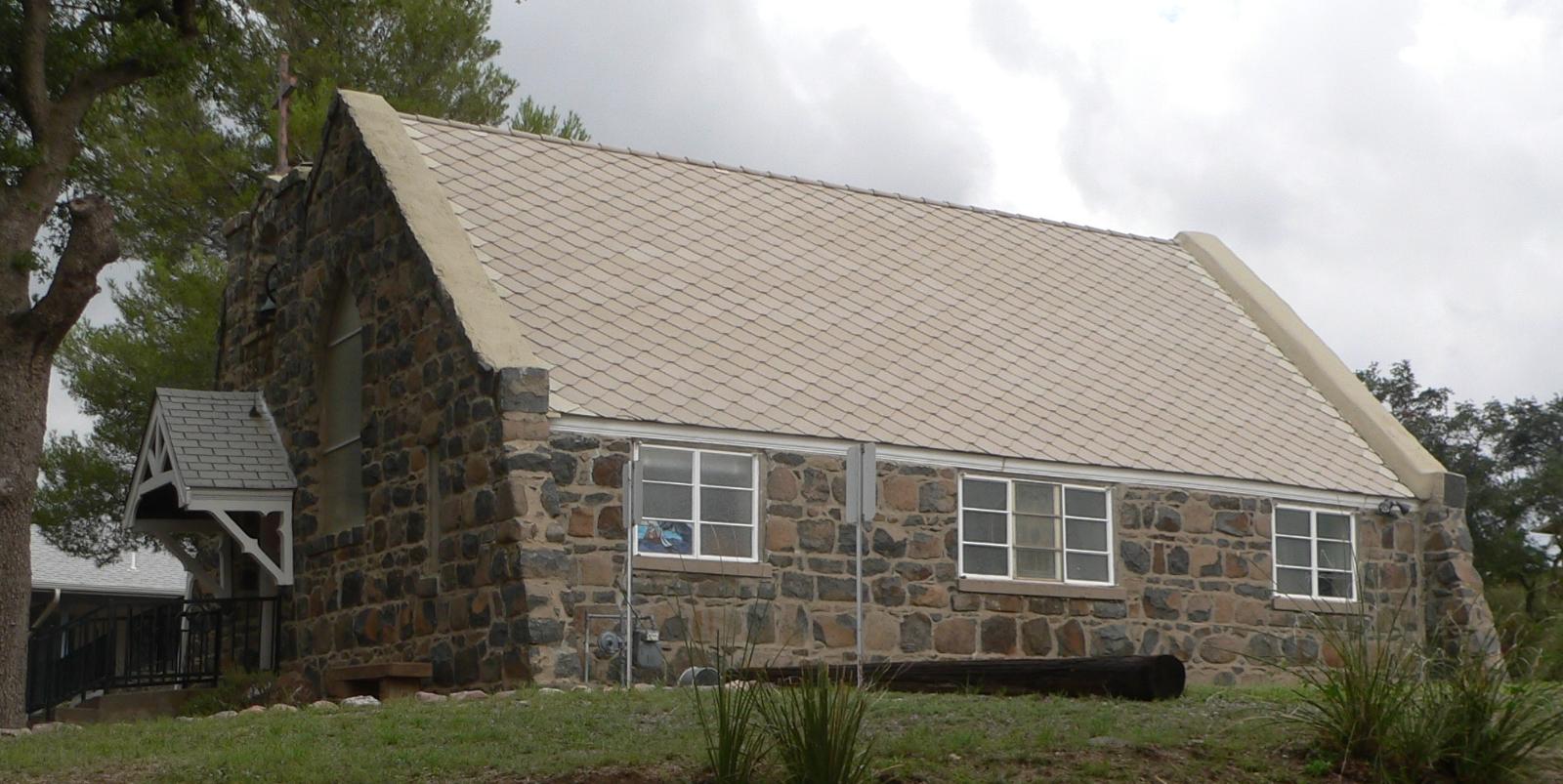
Perched in the foothills of the Santa Catalina Mountains north of Tucson, Oracle offers residents a unique desert mountain environment with cooler temperatures and expansive views. The community sits at approximately 4,500 feet elevation, providing relief from the desert heat while maintaining the characteristic beauty of the Sonoran Desert. This elevation advantage, combined with larger lot sizes and custom homes, has made Oracle increasingly popular with buyers seeking luxury mountain living.
Oracle’s appeal extends beyond its natural setting to include proximity to outdoor recreation, including hiking trails in the Coronado National Forest and the famous Oracle State Park. The community attracts retirees and second-home owners drawn to its peaceful atmosphere and stunning desert vistas. Many properties feature custom architecture designed to take advantage of mountain views, while the area’s lower density development creates a sense of privacy and exclusivity that justifies premium pricing.
26. Chandler – 153.2% Home Price Increase Since 2010

- 2010: $210,462
- 2011: $180,989 (−$29,473, −14.00% from previous year)
- 2012: $192,877 (+$11,888, +6.57% from previous year)
- 2013: $235,699 (+$42,822, +22.20% from previous year)
- 2014: $262,974 (+$27,275, +11.57% from previous year)
- 2015: $270,461 (+$7,487, +2.85% from previous year)
- 2016: $287,886 (+$17,425, +6.44% from previous year)
- 2017: $300,809 (+$12,923, +4.49% from previous year)
- 2018: $322,654 (+$21,845, +7.26% from previous year)
- 2019: $341,873 (+$19,220, +5.96% from previous year)
- 2020: $372,055 (+$30,182, +8.83% from previous year)
- 2021: $456,169 (+$84,114, +22.61% from previous year)
- 2022: $575,524 (+$119,354, +26.16% from previous year)
- 2023: $525,390 (−$50,133, −8.71% from previous year)
- 2024: $549,016 (+$23,626, +4.50% from previous year)
- 2025: $532,996 (−$16,021, −2.92% from previous year)
Chandler’s housing market reflects the evolution of a major Phoenix suburb from an affordable family destination to a premium tech corridor community. After hitting a post-recession low of around $181,000 in 2011, home values have surged to over $532,000 by 2025. The city experienced its most dramatic growth during 2022, when median prices jumped more than 26% in a single year, though recent market corrections have moderated those gains.
Chandler – Silicon Desert Tech Hub

Once known primarily as an agricultural community, Chandler has transformed into one of Arizona’s most important technology centers, earning the nickname “Silicon Desert.” Major employers including Intel, Microchip Technology, and PayPal have established significant operations in the city, creating a high-income workforce that drives demand for quality housing. This economic diversification has made Chandler one of the most stable and desirable communities in the Phoenix metro area.
The city’s master-planned communities feature resort-style amenities, excellent schools, and convenient access to both Sky Harbor International Airport and downtown Phoenix. Chandler’s strategic location in the southeast Valley, combined with its strong job market and family-friendly atmosphere, attracts young professionals and families willing to pay premium prices for suburban convenience. The community’s continued investment in infrastructure and economic development suggests sustained demand for housing despite recent price volatility.
25. Litchfield Park – 188.4% Home Price Increase Since 2010

- 2010: $185,194
- 2011: $167,221 (−$17,974, −9.71% from previous year)
- 2012: $183,999 (+$16,778, +10.03% from previous year)
- 2013: $226,303 (+$42,304, +22.99% from previous year)
- 2014: $253,763 (+$27,460, +12.13% from previous year)
- 2015: $261,969 (+$8,206, +3.23% from previous year)
- 2016: $283,254 (+$21,285, +8.12% from previous year)
- 2017: $298,637 (+$15,383, +5.43% from previous year)
- 2018: $320,097 (+$21,460, +7.19% from previous year)
- 2019: $336,993 (+$16,895, +5.28% from previous year)
- 2020: $365,839 (+$28,846, +8.56% from previous year)
- 2021: $455,137 (+$89,299, +24.41% from previous year)
- 2022: $575,490 (+$120,352, +26.44% from previous year)
- 2023: $528,670 (−$46,820, −8.14% from previous year)
- 2024: $547,655 (+$18,985, +3.59% from previous year)
- 2025: $534,091 (−$13,564, −2.48% from previous year)
Litchfield Park demonstrates one of Arizona’s most impressive housing market transformations, with median home values nearly tripling from their 2010 starting point of $185,000 to over $534,000 by 2025. The community experienced particularly strong momentum during 2013, when prices jumped nearly 23%, and again during the pandemic years with consecutive annual gains exceeding 24%. Recent market adjustments have brought some price moderation, but long-term appreciation remains substantial.
Litchfield Park – Historic Company Town Turned Luxury Enclave

Originally developed as a company town by Goodyear Tire and Rubber Company in the 1920s, Litchfield Park has evolved into one of the west Valley’s most prestigious communities. The city’s tree-lined streets, historic downtown core, and well-preserved architecture create a unique atmosphere that distinguishes it from typical Phoenix suburbs. This historic character, combined with excellent schools and upscale amenities, has made Litchfield Park increasingly attractive to affluent buyers.
The community’s appeal extends beyond its historical significance to include world-class golf courses, including The Wigwam resort, and proximity to major employment centers in nearby Goodyear and Phoenix. Litchfield Park’s small-town feel within a major metropolitan area creates a rare combination that commands premium prices. The city’s careful preservation of its historic character while accommodating modern development needs has created a sustainable model for long-term property value appreciation.
24. Waddell – 193.1% Home Price Increase Since 2010

- 2010: $182,852
- 2011: $167,156 (−$15,696, −8.58% from previous year)
- 2012: $173,857 (+$6,701, +4.01% from previous year)
- 2013: $211,189 (+$37,332, +21.47% from previous year)
- 2014: $240,750 (+$29,560, +14.00% from previous year)
- 2015: $248,299 (+$7,550, +3.14% from previous year)
- 2016: $268,646 (+$20,346, +8.19% from previous year)
- 2017: $286,784 (+$18,139, +6.75% from previous year)
- 2018: $309,925 (+$23,141, +8.07% from previous year)
- 2019: $328,490 (+$18,565, +5.99% from previous year)
- 2020: $346,095 (+$17,604, +5.36% from previous year)
- 2021: $445,004 (+$98,909, +28.58% from previous year)
- 2022: $562,522 (+$117,518, +26.41% from previous year)
- 2023: $518,685 (−$43,837, −7.79% from previous year)
- 2024: $544,034 (+$25,348, +4.89% from previous year)
- 2025: $535,973 (−$8,061, −1.48% from previous year)
Waddell’s housing market represents one of Arizona’s most dramatic appreciation stories, with median home values climbing from under $183,000 in 2010 to nearly $536,000 by 2025 – an increase of almost 200%. The community experienced explosive growth during 2021, when prices jumped more than 28%, followed by another strong year in 2022 with gains exceeding 26%. Despite recent market cooling, the long-term trajectory shows remarkable sustained growth.
Waddell – Desert Living With Urban Access

Located in the northwest Valley near Luke Air Force Base, Waddell offers residents a unique combination of desert living and metropolitan accessibility. The unincorporated community benefits from larger lot sizes and a more rural atmosphere while maintaining reasonable commuting distance to major employment centers in Phoenix and the west Valley. This balance between space and convenience has made Waddell increasingly popular with buyers seeking alternatives to dense suburban developments.
Waddell’s rapid price appreciation reflects broader trends in the Phoenix housing market, where buyers have increasingly valued space, privacy, and outdoor recreation opportunities. The area’s proximity to White Tank Mountain Regional Park and desert preserves appeals to outdoor enthusiasts, while larger lot sizes allow for RV parking, pools, and other amenities that suburban homes cannot accommodate. The community’s growth has been driven largely by families and retirees seeking more affordable alternatives to established neighborhoods while maintaining desert lifestyle benefits.
23. Wickenburg – 139.7% Home Price Increase Since 2010

- 2010: $224,647
- 2011: $210,973 (−$13,674, −6.09% from previous year)
- 2012: $202,698 (−$8,275, −3.92% from previous year)
- 2013: $226,562 (+$23,865, +11.77% from previous year)
- 2014: $243,040 (+$16,478, +7.27% from previous year)
- 2015: $253,556 (+$10,516, +4.33% from previous year)
- 2016: $274,318 (+$20,763, +8.19% from previous year)
- 2017: $283,617 (+$9,299, +3.39% from previous year)
- 2018: $307,262 (+$23,645, +8.34% from previous year)
- 2019: $337,720 (+$30,458, +9.91% from previous year)
- 2020: $362,137 (+$24,417, +7.23% from previous year)
- 2021: $440,561 (+$78,424, +21.66% from previous year)
- 2022: $550,942 (+$110,381, +25.05% from previous year)
- 2023: $523,179 (−$27,763, −5.04% from previous year)
- 2024: $540,347 (+$17,168, +3.28% from previous year)
- 2025: $538,519 (−$1,828, −0.34% from previous year)
Wickenburg’s housing market shows steady appreciation over the past decade and a half, with median home values more than doubling from around $225,000 in 2010 to over $538,000 by 2025. The town experienced its strongest growth during the pandemic years, with 2021 and 2022 delivering consecutive annual gains exceeding 21% and 25% respectively. Recent years have seen market stabilization, with prices holding near current levels despite broader economic uncertainties.
Wickenburg – Desert Town With Western Heritage
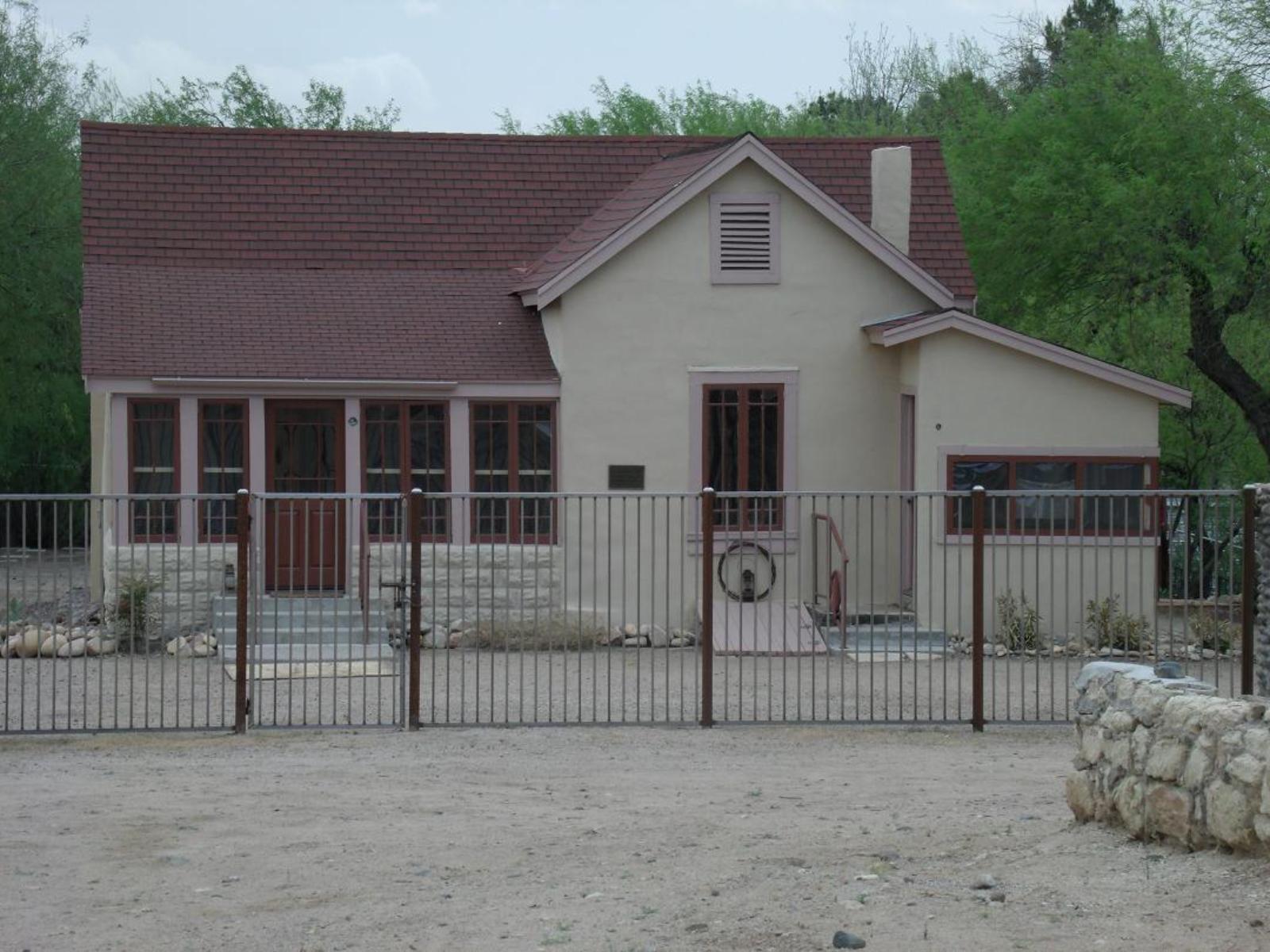
Known as “Dude Ranch Capital of the World,” Wickenburg combines authentic western heritage with modern desert living approximately 60 miles northwest of Phoenix. The historic town maintains its cowboy character through preserved architecture, western-themed businesses, and annual events that celebrate its mining and ranching heritage. This unique identity, combined with stunning Sonoran Desert scenery, attracts buyers seeking genuine western lifestyle experiences rather than typical suburban development.
Wickenburg’s appeal extends beyond its western charm to include excellent golf courses, art galleries, and outdoor recreation opportunities in the surrounding desert mountains. The town’s location along the Hassayampa River creates a rare riparian environment in the Sonoran Desert, while nearby dude ranches and guest resorts add to its distinctive character. Properties in Wickenburg often feature horse facilities, larger lots, and custom architecture that reflects the area’s western heritage, creating a unique market niche that commands premium pricing from buyers seeking authentic Arizona experiences.
22. Pinetop – 130.3% Home Price Increase Since 2010

- 2010: $240,764
- 2011: $216,927 (−$23,837, −9.90% from previous year)
- 2012: $225,978 (+$9,051, +4.17% from previous year)
- 2013: $233,982 (+$8,004, +3.54% from previous year)
- 2014: $248,298 (+$14,316, +6.12% from previous year)
- 2015: $259,567 (+$11,269, +4.54% from previous year)
- 2016: $259,758 (+$192, +0.07% from previous year)
- 2017: $265,676 (+$5,918, +2.28% from previous year)
- 2018: $280,961 (+$15,285, +5.75% from previous year)
- 2019: $300,006 (+$19,045, +6.78% from previous year)
- 2020: $322,934 (+$22,928, +7.64% from previous year)
- 2021: $437,710 (+$114,775, +35.54% from previous year)
- 2022: $550,224 (+$112,514, +25.71% from previous year)
- 2023: $522,597 (−$27,627, −5.02% from previous year)
- 2024: $549,984 (+$27,387, +5.24% from previous year)
- 2025: $554,542 (+$4,558, +0.83% from previous year)
Pinetop’s housing market demonstrates the appeal of Arizona’s mountain communities, with median home values climbing from around $241,000 in 2010 to over $554,000 by 2025. The town experienced extraordinary growth during 2021, when prices surged more than 35% in a single year, followed by another strong performance in 2022 with gains exceeding 25%. This dramatic appreciation reflects intense demand for mountain properties during the pandemic era, when buyers sought cooler climates and outdoor recreation opportunities.
Pinetop – White Mountain Recreation Paradise

Nestled in the White Mountains of eastern Arizona at approximately 7,200 feet elevation, Pinetop offers residents a dramatically different climate from the desert valleys below. The community experiences four distinct seasons, including snow in winter and comfortable summers that rarely exceed 80 degrees. This elevation advantage, combined with surrounding Apache-Sitgreaves National Forest, creates an outdoor recreation paradise that attracts buyers from across the Southwest seeking mountain lifestyle amenities.
Pinetop’s transformation from a seasonal cabin community to a year-round residential destination has driven sustained price appreciation. The area offers world-class fishing, hiking, and winter sports, while the nearby White Mountain Apache Reservation provides additional recreational opportunities including the Hon-Dah Casino and Resort. Many properties feature mountain architecture with log construction and large decks designed to take advantage of forest views, creating a unique market segment that appeals to buyers seeking authentic mountain living experiences.
21. Elgin – 89.8% Home Price Increase Since 2010

- 2010: $292,332
- 2011: $266,469 (−$25,863, −8.85% from previous year)
- 2012: $277,229 (+$10,759, +4.04% from previous year)
- 2013: $289,389 (+$12,160, +4.39% from previous year)
- 2014: $298,734 (+$9,345, +3.23% from previous year)
- 2015: $311,874 (+$13,140, +4.40% from previous year)
- 2016: $326,685 (+$14,811, +4.75% from previous year)
- 2017: $343,663 (+$16,978, +5.20% from previous year)
- 2018: $329,552 (−$14,111, −4.11% from previous year)
- 2019: $357,711 (+$28,159, +8.54% from previous year)
- 2020: $381,262 (+$23,551, +6.58% from previous year)
- 2021: $469,791 (+$88,529, +23.22% from previous year)
- 2022: $536,530 (+$66,739, +14.21% from previous year)
- 2023: $523,943 (−$12,586, −2.35% from previous year)
- 2024: $560,107 (+$36,164, +6.90% from previous year)
- 2025: $554,837 (−$5,270, −0.94% from previous year)
Elgin’s housing market reflects the growing appeal of Arizona’s wine country, with median home values climbing from around $292,000 in 2010 to nearly $555,000 by 2025. The community experienced steady growth throughout most of the period, with particularly strong gains during 2021 when prices jumped more than 23%. Recent market performance has been more volatile, with alternating periods of growth and modest corrections, but overall trajectory remains strongly upward.
Elgin – Arizona Wine Country Sophistication
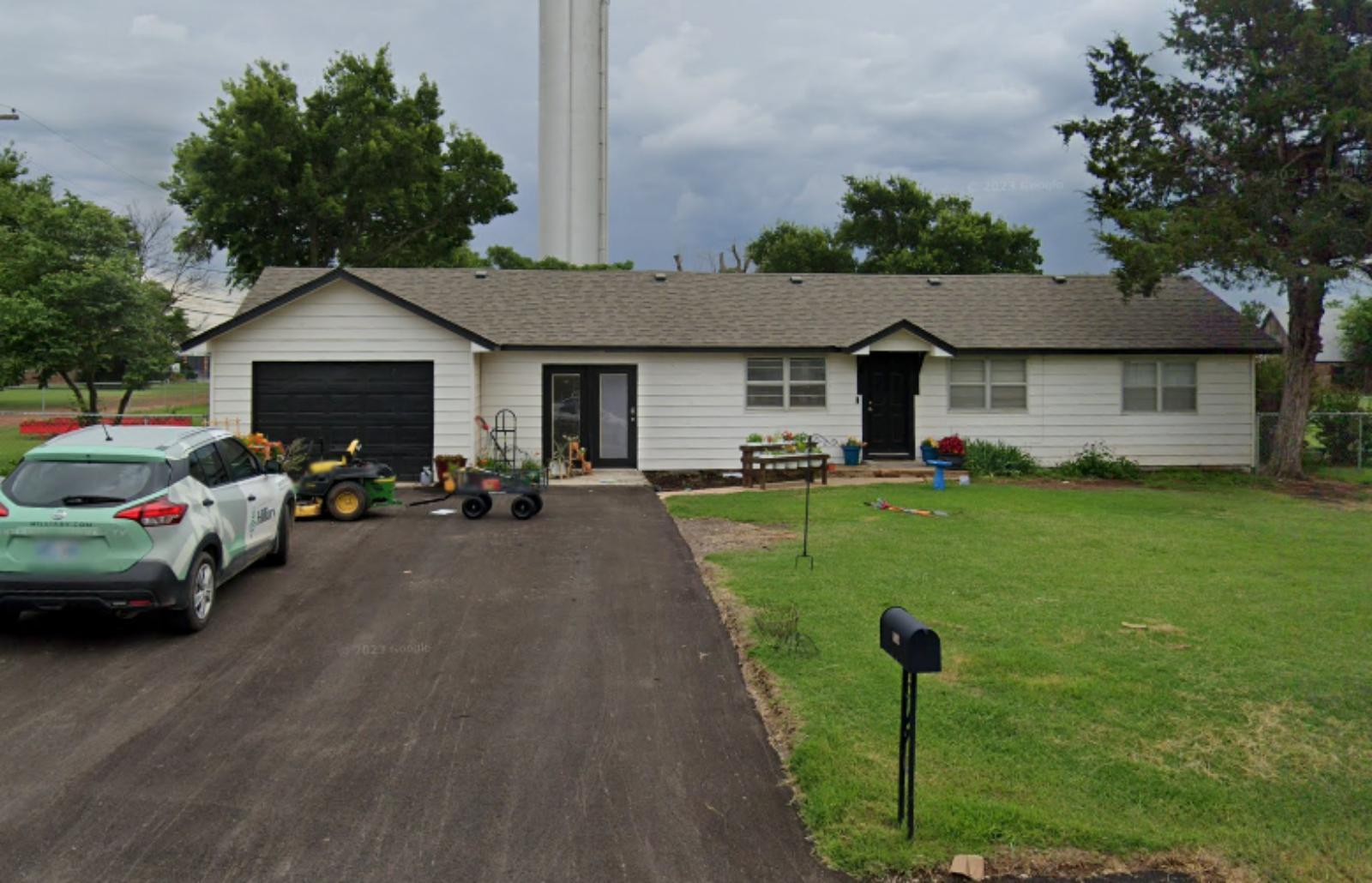
Located in the rolling grasslands of southeastern Arizona at approximately 4,500 feet elevation, Elgin has emerged as the heart of Arizona’s burgeoning wine industry. The area’s unique combination of elevation, climate, and soil conditions creates ideal grape-growing conditions that have attracted numerous wineries and vineyards. This agricultural renaissance, combined with stunning views of the surrounding mountain ranges, has transformed Elgin into a sophisticated rural destination that attracts affluent buyers seeking wine country lifestyle amenities.
Elgin’s appeal extends beyond viticulture to include proximity to both Tucson and the historic mining town of Bisbee, creating diverse recreational and cultural opportunities. The area’s rural character allows for larger properties with custom homes, guest houses, and equestrian facilities that take advantage of the expansive grassland setting. Many buyers are drawn to Elgin’s combination of agricultural heritage, modern wine industry sophistication, and natural beauty, creating a unique market niche that commands premium prices for properties offering authentic rural Arizona experiences.
20. Forest Lakes – 128.4% Home Price Increase Since 2010

- 2010: $245,276
- 2011: $193,091 (−$52,185, −21.28% from previous year)
- 2012: $197,274 (+$4,184, +2.17% from previous year)
- 2013: $212,457 (+$15,183, +7.70% from previous year)
- 2014: $239,900 (+$27,443, +12.92% from previous year)
- 2015: $249,288 (+$9,388, +3.91% from previous year)
- 2016: $252,914 (+$3,626, +1.45% from previous year)
- 2017: $270,808 (+$17,894, +7.08% from previous year)
- 2018: $277,760 (+$6,952, +2.57% from previous year)
- 2019: $303,759 (+$25,999, +9.36% from previous year)
- 2020: $327,402 (+$23,643, +7.78% from previous year)
- 2021: $417,409 (+$90,006, +27.49% from previous year)
- 2022: $550,134 (+$132,726, +31.80% from previous year)
- 2023: $529,377 (−$20,758, −3.77% from previous year)
- 2024: $559,717 (+$30,340, +5.73% from previous year)
- 2025: $560,215 (+$498, +0.09% from previous year)
Forest Lakes experienced one of Arizona’s most dramatic housing market recoveries, climbing from a recession low of around $193,000 in 2011 to over $560,000 by 2025. The community’s most explosive growth occurred during 2022, when median home values surged nearly 32% in a single year, following strong 2021 gains of more than 27%. This remarkable appreciation reflects intense demand for mountain properties during the pandemic era, when remote work made mountain communities more accessible to urban professionals.
Forest Lakes – Mogollon Rim Mountain Retreat

Situated along the scenic Mogollon Rim at approximately 7,500 feet elevation, Forest Lakes offers residents a pristine mountain environment surrounded by ponderosa pine forests and clear mountain lakes. The community provides an escape from Arizona’s desert heat with cool summers and snowy winters that create a true four-season mountain experience. This dramatic elevation change from the desert valleys below, combined with abundant outdoor recreation opportunities, has made Forest Lakes increasingly popular with buyers seeking mountain lifestyle amenities.
Forest Lakes’ appeal stems from its combination of natural beauty and recreational opportunities, including fishing, hiking, and winter sports in the surrounding Coconino National Forest. The community attracts both full-time residents and seasonal cabin owners who value the area’s pristine environment and cooler climate. Properties often feature mountain architecture with log construction and large lots that take advantage of forest settings, creating a unique market segment that appeals to buyers seeking authentic mountain living experiences away from urban development pressures.
19. Greer – 10.4% Home Price Increase Since 2024

- 2023: $515,539
- 2024: $557,521 (+$41,982, +8.14% from previous year)
- 2025: $568,877 (+$11,355, +2.04% from previous year)
Greer’s limited housing data reflects its status as one of Arizona’s most exclusive mountain communities, with median home values climbing from approximately $516,000 in 2023 to nearly $569,000 by 2025. Despite having only three years of available data, the community shows consistent upward price momentum, with strong gains in 2024 followed by continued growth into 2025. This appreciation pattern suggests robust demand for properties in this pristine mountain setting.
Greer – Alpine Paradise in the White Mountains
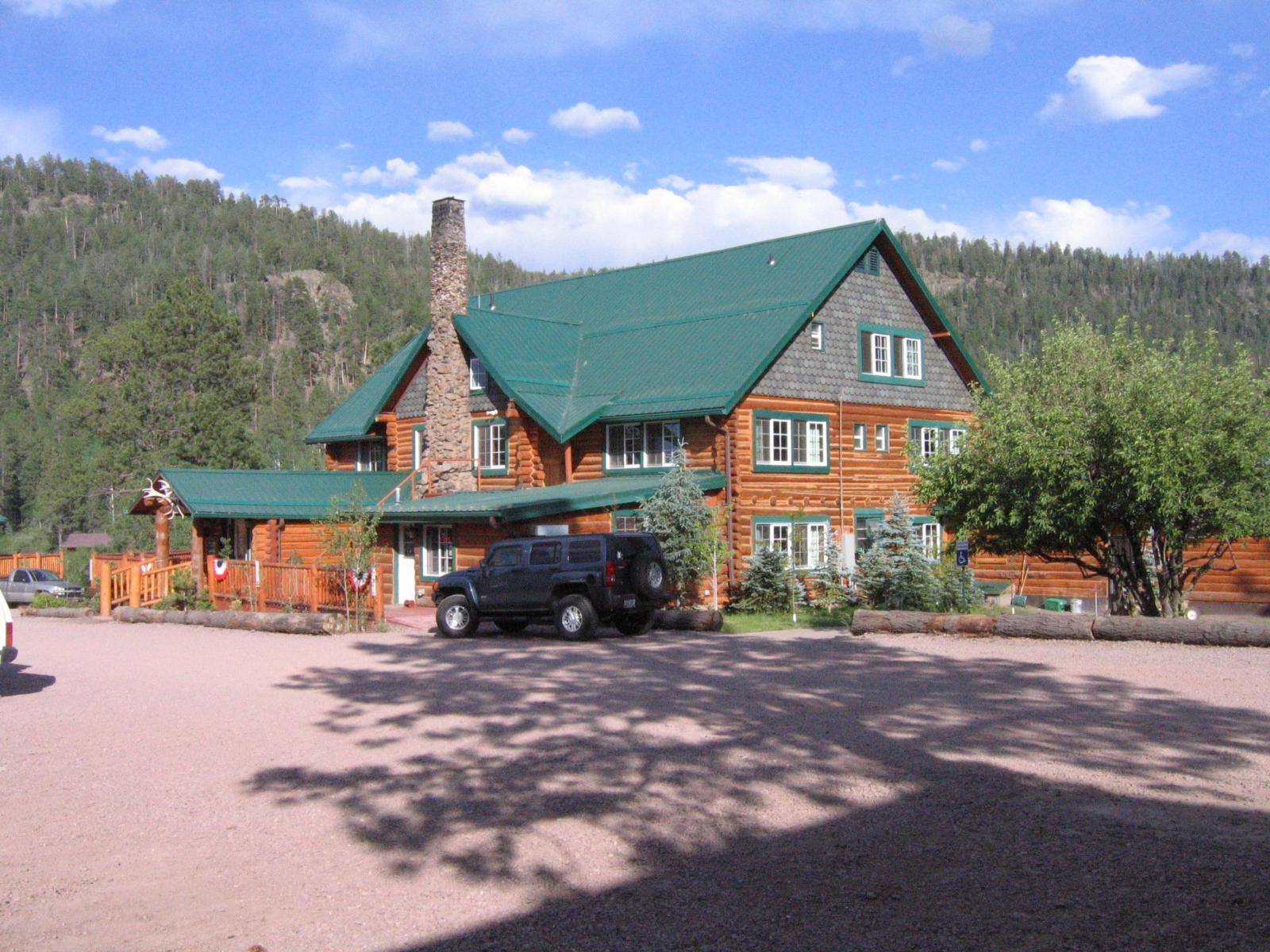
Nestled in a high mountain valley at approximately 8,500 feet elevation, Greer represents one of Arizona’s most exclusive mountain communities. Surrounded by the Apache-Sitgreaves National Forest and featuring the Little Colorado River running through its center, Greer offers residents an alpine environment that feels more like Colorado than typical Arizona destinations. The community’s elevation provides cool summers, snowy winters, and year-round outdoor recreation opportunities that attract affluent buyers seeking premium mountain properties.
Greer’s limited housing inventory and pristine natural setting create intense competition among buyers, driving sustained price appreciation despite the community’s remote location. The area offers world-class fishing, hiking, and cross-country skiing, while nearby Sunrise Park Resort provides downhill skiing opportunities. Properties in Greer often feature custom mountain architecture with premium finishes designed to take advantage of meadow and forest views, creating a unique luxury market segment that appeals to buyers seeking the ultimate Arizona mountain retreat experience.
18. Anthem – 179.3% Home Price Increase Since 2010

- 2010: $206,141
- 2011: $192,120 (−$14,020, −6.80% from previous year)
- 2012: $216,230 (+$24,110, +12.55% from previous year)
- 2013: $259,835 (+$43,605, +20.17% from previous year)
- 2014: $286,680 (+$26,845, +10.33% from previous year)
- 2015: $286,590 (−$90, −0.03% from previous year)
- 2016: $300,457 (+$13,867, +4.84% from previous year)
- 2017: $312,110 (+$11,653, +3.88% from previous year)
- 2018: $328,587 (+$16,477, +5.28% from previous year)
- 2019: $343,801 (+$15,213, +4.63% from previous year)
- 2020: $370,142 (+$26,341, +7.66% from previous year)
- 2021: $474,274 (+$104,132, +28.13% from previous year)
- 2022: $618,810 (+$144,536, +30.48% from previous year)
- 2023: $557,113 (−$61,697, −9.97% from previous year)
- 2024: $584,754 (+$27,642, +4.96% from previous year)
- 2025: $575,847 (−$8,907, −1.52% from previous year)
Anthem’s housing market exemplifies the transformation of a master-planned community from affordable family destination to premium suburban enclave. Starting from around $206,000 in 2010, median home values have climbed to nearly $576,000 by 2025, representing growth of almost 180%. The community experienced explosive appreciation during 2021 and 2022, with consecutive annual gains exceeding 28% and 30% respectively, before experiencing market corrections that have brought recent price moderation.
Anthem – Master-Planned Community Excellence
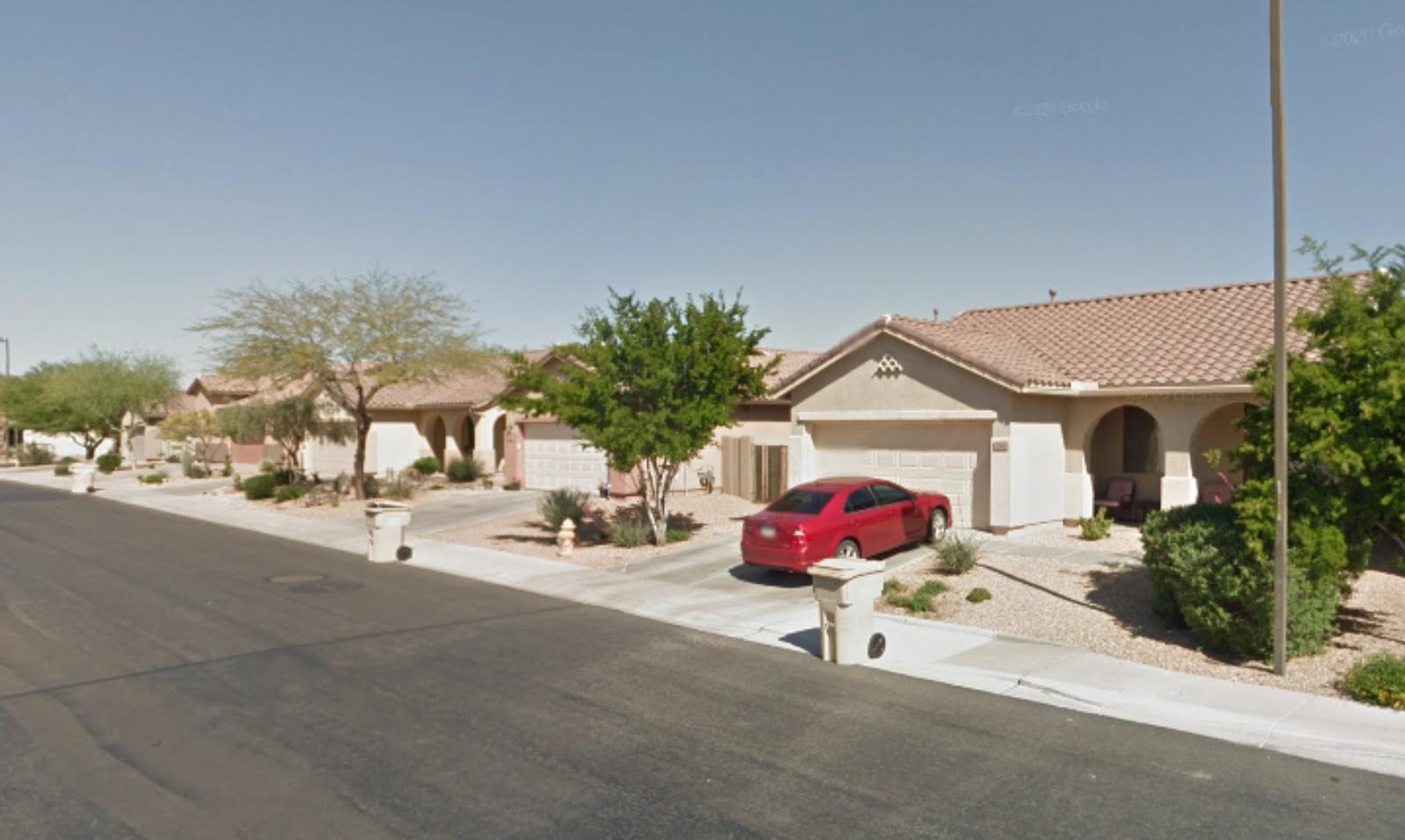
Located in the high Sonoran Desert north of Phoenix, Anthem represents one of Arizona’s most successful master-planned communities, offering residents resort-style amenities and stunning desert mountain views. The community sits at approximately 2,400 feet elevation, providing cooler temperatures than central Phoenix while maintaining convenient access to metropolitan employment centers. This combination of luxury amenities, natural beauty, and strategic location has made Anthem increasingly attractive to affluent families and retirees.
Anthem’s appeal extends beyond its physical attributes to include exceptional schools, championship golf courses, and extensive recreational facilities that create a complete lifestyle package. The community’s careful planning and architectural standards have maintained property values while ensuring continued desirability among buyers seeking suburban luxury. Anthem’s success demonstrates the market premium that well-executed master-planned communities can command, particularly when they offer unique amenities and natural settings that distinguish them from typical suburban developments.
17. Gilbert – 177.1% Home Price Increase Since 2010

- 2010: $209,440
- 2011: $183,225 (−$26,215, −12.52% from previous year)
- 2012: $199,142 (+$15,917, +8.69% from previous year)
- 2013: $248,945 (+$49,804, +25.01% from previous year)
- 2014: $276,793 (+$27,848, +11.19% from previous year)
- 2015: $281,734 (+$4,942, +1.79% from previous year)
- 2016: $299,051 (+$17,316, +6.15% from previous year)
- 2017: $313,707 (+$14,656, +4.90% from previous year)
- 2018: $336,372 (+$22,665, +7.22% from previous year)
- 2019: $358,361 (+$21,989, +6.54% from previous year)
- 2020: $389,280 (+$30,919, +8.63% from previous year)
- 2021: $488,585 (+$99,304, +25.51% from previous year)
- 2022: $623,731 (+$135,146, +27.66% from previous year)
- 2023: $562,698 (−$61,033, −9.79% from previous year)
- 2024: $595,929 (+$33,231, +5.91% from previous year)
- 2025: $580,466 (−$15,463, −2.59% from previous year)
Gilbert’s housing market demonstrates the evolution of a small agricultural town into one of Arizona’s most sought-after suburbs, with median home values climbing from around $209,000 in 2010 to over $580,000 by 2025. The community experienced dramatic pandemic-era growth, with consecutive annual gains exceeding 25% in both 2021 and 2022, before recent market corrections brought some price moderation. Despite recent adjustments, Gilbert maintains its position as one of the Phoenix area’s premium family destinations.
Gilbert – Family-Friendly Suburban Excellence

Once known as the “Hay Capital of the World,” Gilbert has transformed into a master-planned suburban community renowned for excellent schools, family amenities, and safe neighborhoods. The town’s strategic location in the southeast Valley provides convenient access to major employment centers while maintaining a distinct community identity. Gilbert’s combination of top-rated schools, recreational facilities, and well-planned neighborhoods has made it consistently rank among America’s best places to live.
Gilbert’s appeal centers on its family-oriented environment, with numerous parks, sports complexes, and community events that create a strong sense of belonging. The town’s downtown area features restaurants, shops, and entertainment venues that serve as a community focal point, while master-planned neighborhoods offer resort-style amenities and modern housing options. This comprehensive approach to community development, combined with proximity to major employers and excellent schools, sustains strong demand from families willing to pay premium prices for suburban excellence.
16. Sonoita – 93.8% Home Price Increase Since 2010

- 2010: $304,792
- 2011: $281,758 (−$23,034, −7.56% from previous year)
- 2012: $293,790 (+$12,032, +4.27% from previous year)
- 2013: $313,512 (+$19,721, +6.71% from previous year)
- 2014: $322,412 (+$8,901, +2.84% from previous year)
- 2015: $339,417 (+$17,004, +5.27% from previous year)
- 2016: $347,041 (+$7,624, +2.25% from previous year)
- 2017: $358,167 (+$11,126, +3.21% from previous year)
- 2018: $347,141 (−$11,026, −3.08% from previous year)
- 2019: $375,515 (+$28,374, +8.17% from previous year)
- 2020: $399,148 (+$23,633, +6.29% from previous year)
- 2021: $495,452 (+$96,304, +24.13% from previous year)
- 2022: $566,635 (+$71,183, +14.37% from previous year)
- 2023: $558,308 (−$8,328, −1.47% from previous year)
- 2024: $588,801 (+$30,494, +5.46% from previous year)
- 2025: $590,388 (+$1,587, +0.27% from previous year)
Sonoita’s housing market reflects the steady appreciation of Arizona’s premier wine country, with median home values climbing from around $305,000 in 2010 to nearly $590,000 by 2025. The community experienced strong pandemic-era growth, particularly in 2021 when prices jumped more than 24%, though recent years have seen market stabilization. Starting from a higher baseline than most Arizona communities, Sonoita has maintained consistent long-term appreciation while preserving its rural character.
Sonoita – Wine Country Elegance

Located in the heart of Arizona’s wine country at an elevation of approximately 5,000 feet, Sonoita combines high desert beauty with a sophisticated agricultural lifestyle. The area’s rolling grasslands, oak woodlands, and vineyard-dotted landscape create a unique environment that supports both cattle ranching and wine production. This combination of traditional western heritage and modern viticulture has attracted buyers seeking luxury rural properties with authentic southwestern character.
Sonoita’s appeal extends beyond wine production to include working cattle ranches, custom homes on large acreage, and proximity to outdoor recreation in the Santa Rita Mountains. The community offers a rare combination of rural privacy and sophisticated amenities, with many properties featuring guest accommodations, horse facilities, and contemporary architecture designed to complement the natural landscape. The area’s limited development potential and agricultural zoning create scarcity that sustains premium pricing for buyers seeking authentic ranch and wine country experiences.
15. Munds Park – 172.4% Home Price Increase Since 2010

- 2010: $223,161
- 2011: $193,669 (−$29,492, −13.22% from previous year)
- 2012: $200,710 (+$7,041, +3.64% from previous year)
- 2013: $221,366 (+$20,656, +10.29% from previous year)
- 2014: $238,416 (+$17,050, +7.70% from previous year)
- 2015: $253,369 (+$14,953, +6.27% from previous year)
- 2016: $269,489 (+$16,120, +6.36% from previous year)
- 2017: $288,769 (+$19,281, +7.15% from previous year)
- 2018: $307,000 (+$18,231, +6.31% from previous year)
- 2019: $332,879 (+$25,879, +8.43% from previous year)
- 2020: $352,711 (+$19,831, +5.96% from previous year)
- 2021: $472,549 (+$119,838, +33.98% from previous year)
- 2022: $618,796 (+$146,248, +30.95% from previous year)
- 2023: $586,270 (−$32,527, −5.26% from previous year)
- 2024: $602,892 (+$16,622, +2.84% from previous year)
- 2025: $607,831 (+$4,939, +0.82% from previous year)
Munds Park’s housing market exemplifies the explosive growth potential of Arizona’s mountain communities, with median home values climbing from around $223,000 in 2010 to over $607,000 by 2025. The community experienced extraordinary pandemic-era appreciation, with consecutive annual gains of nearly 34% and 31% in 2021 and 2022 respectively. This mountain retreat has transformed from an affordable weekend destination to a premium real estate market commanding prices well above $600,000.
Munds Park – Flagstaff’s Mountain Gateway

Situated on the Mogollon Rim at approximately 6,800 feet elevation, Munds Park offers residents a true mountain living experience with ponderosa pine forests and four-season climate. The community’s location provides convenient access to Flagstaff while maintaining its secluded mountain character, making it popular with both permanent residents and vacation home owners. This elevation advantage creates dramatically cooler temperatures that draw buyers from Arizona’s desert regions seeking relief from summer heat.
Munds Park’s appeal centers on its authentic mountain lifestyle, with hiking trails, fishing opportunities, and winter recreation creating year-round outdoor experiences. The community’s proximity to Flagstaff provides urban amenities while preserving its forest setting and recreational focus. Many properties feature mountain architecture with log accents, large decks, and forest views that take advantage of the dramatic natural setting. The area’s limited development potential due to forest service lands and topographical constraints has created scarcity that drives premium pricing for available mountain properties.
14. Prescott – 145.2% Home Price Increase Since 2010

- 2010: $249,053
- 2011: $225,747 (−$23,306, −9.36% from previous year)
- 2012: $226,261 (+$515, +0.23% from previous year)
- 2013: $255,572 (+$29,311, +12.95% from previous year)
- 2014: $283,105 (+$27,533, +10.77% from previous year)
- 2015: $303,536 (+$20,431, +7.22% from previous year)
- 2016: $328,043 (+$24,507, +8.07% from previous year)
- 2017: $344,727 (+$16,684, +5.09% from previous year)
- 2018: $374,586 (+$29,859, +8.66% from previous year)
- 2019: $401,236 (+$26,649, +7.11% from previous year)
- 2020: $421,677 (+$20,441, +5.09% from previous year)
- 2021: $512,977 (+$91,300, +21.65% from previous year)
- 2022: $626,099 (+$113,122, +22.05% from previous year)
- 2023: $592,124 (−$33,975, −5.43% from previous year)
- 2024: $617,263 (+$25,138, +4.25% from previous year)
- 2025: $610,801 (−$6,462, −1.05% from previous year)
Prescott’s housing market demonstrates consistent long-term appreciation, with median home values climbing from around $249,000 in 2010 to over $610,000 by 2025. The historic city experienced strong pandemic-era growth, with consecutive annual gains exceeding 21% in both 2021 and 2022, before recent market adjustments brought some moderation. Despite recent volatility, Prescott maintains its position as one of Arizona’s most desirable mountain communities with sustained demand from retirees and second-home buyers.
Prescott – Mile-High Historic Charm
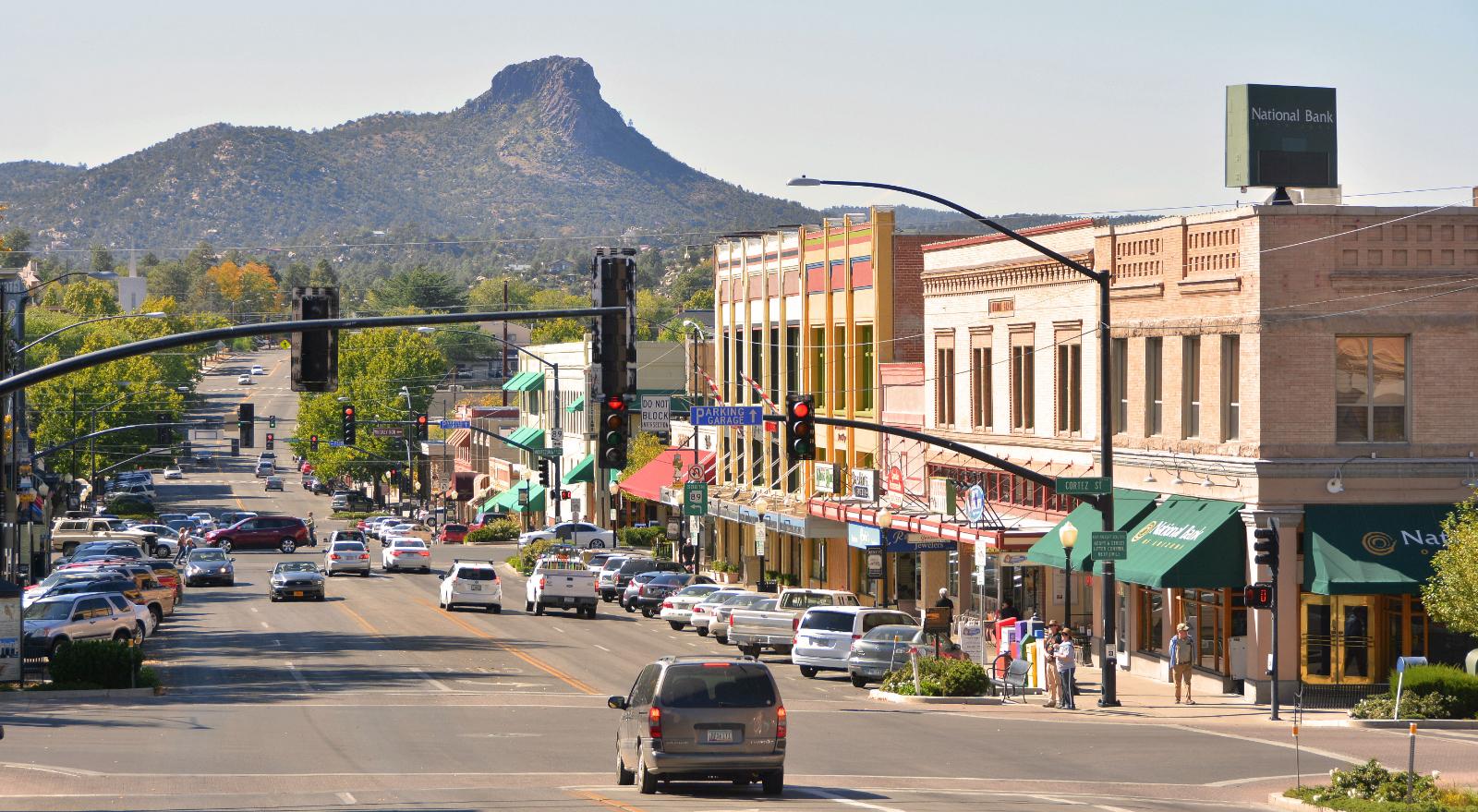
Known as “Everybody’s Western Town,” Prescott combines authentic frontier heritage with modern mountain living at an elevation of approximately 5,400 feet. The city’s historic downtown features the famous Whiskey Row, Victorian architecture, and the world’s oldest rodeo, creating an authentic western atmosphere that attracts visitors and residents from around the world. This combination of historical significance, cultural attractions, and mountain climate has made Prescott one of Arizona’s most sought-after communities.
Prescott’s appeal extends beyond its western heritage to include excellent healthcare facilities, recreational opportunities, and a thriving arts scene. The city’s location in the Bradshaw Mountains provides cooler temperatures, four seasons, and outdoor recreation including hiking, fishing, and winter sports. Many properties feature custom architecture that reflects the area’s western heritage, while newer developments offer modern amenities with mountain views. The combination of historical character, cultural amenities, and natural beauty creates a unique market that sustains premium pricing from buyers seeking authentic western lifestyle experiences.
13. Tortolita – 77.7% Home Price Increase Since 2010

- 2010: $359,200
- 2011: $324,180 (−$35,020, −9.75% from previous year)
- 2012: $284,545 (−$39,635, −12.23% from previous year)
- 2013: $298,115 (+$13,570, +4.77% from previous year)
- 2014: $319,129 (+$21,014, +7.05% from previous year)
- 2015: $328,153 (+$9,024, +2.83% from previous year)
- 2016: $343,497 (+$15,344, +4.68% from previous year)
- 2017: $375,949 (+$32,452, +9.45% from previous year)
- 2018: $383,569 (+$7,619, +2.03% from previous year)
- 2019: $403,204 (+$19,636, +5.12% from previous year)
- 2020: $424,073 (+$20,868, +5.18% from previous year)
- 2021: $515,089 (+$91,017, +21.46% from previous year)
- 2022: $607,222 (+$92,133, +17.89% from previous year)
- 2023: $600,171 (−$7,051, −1.16% from previous year)
- 2024: $624,964 (+$24,793, +4.13% from previous year)
- 2025: $638,321 (+$13,357, +2.14% from previous year)
Tortolita’s housing market shows steady recovery and growth after experiencing significant impacts during the housing crisis, with median home values climbing from a 2012 low of around $285,000 to over $638,000 by 2025. Starting from a higher baseline of $359,000 in 2010, the community has achieved consistent appreciation with particularly strong pandemic-era gains. Current values represent steady growth that reflects the area’s appeal as a luxury desert community north of Tucson.
Tortolita – Sonoran Desert Luxury

Located in the Tortolita Mountains north of Tucson, this master-planned community offers residents luxury desert living with stunning mountain and city views. The area’s elevation provides slightly cooler temperatures than the desert floor while maintaining the dramatic beauty of the Sonoran Desert landscape. Tortolita’s custom homes, golf courses, and resort-style amenities create an upscale environment that attracts affluent buyers seeking premium desert experiences.
Tortolita’s appeal centers on its combination of natural beauty and luxury amenities, with many properties featuring contemporary southwestern architecture, infinity pools, and expansive outdoor living spaces. The community’s proximity to hiking trails in the Tortolita Mountains and Catalina State Park provides outdoor recreation opportunities, while golf courses and spa facilities offer resort-style relaxation. This master-planned approach to luxury desert living, combined with proximity to Tucson’s amenities, sustains strong demand from buyers willing to pay premium prices for sophisticated Sonoran Desert experiences.
12. Parks – 158.0% Home Price Increase Since 2010

- 2010: $249,581
- 2011: $222,649 (−$26,933, −10.79% from previous year)
- 2012: $216,443 (−$6,206, −2.79% from previous year)
- 2013: $213,883 (−$2,560, −1.18% from previous year)
- 2014: $249,020 (+$35,138, +16.43% from previous year)
- 2015: $279,971 (+$30,951, +12.43% from previous year)
- 2016: $292,950 (+$12,978, +4.64% from previous year)
- 2017: $323,010 (+$30,060, +10.26% from previous year)
- 2018: $347,940 (+$24,931, +7.72% from previous year)
- 2019: $376,149 (+$28,208, +8.11% from previous year)
- 2020: $399,009 (+$22,860, +6.08% from previous year)
- 2021: $491,118 (+$92,109, +23.08% from previous year)
- 2022: $618,852 (+$127,735, +26.01% from previous year)
- 2023: $598,373 (−$20,479, −3.31% from previous year)
- 2024: $626,803 (+$28,430, +4.75% from previous year)
- 2025: $643,689 (+$16,885, +2.69% from previous year)
Parks demonstrates remarkable housing market resilience and growth, with median home values climbing from around $250,000 in 2010 to over $643,000 by 2025. The community experienced its strongest appreciation during the pandemic years, with consecutive gains of 23% and 26% in 2021 and 2022 respectively. After bottoming out below $214,000 in 2013, the mountain community has achieved extraordinary growth that reflects intense demand for northern Arizona mountain properties.
Parks – Gateway to Grand Canyon Country
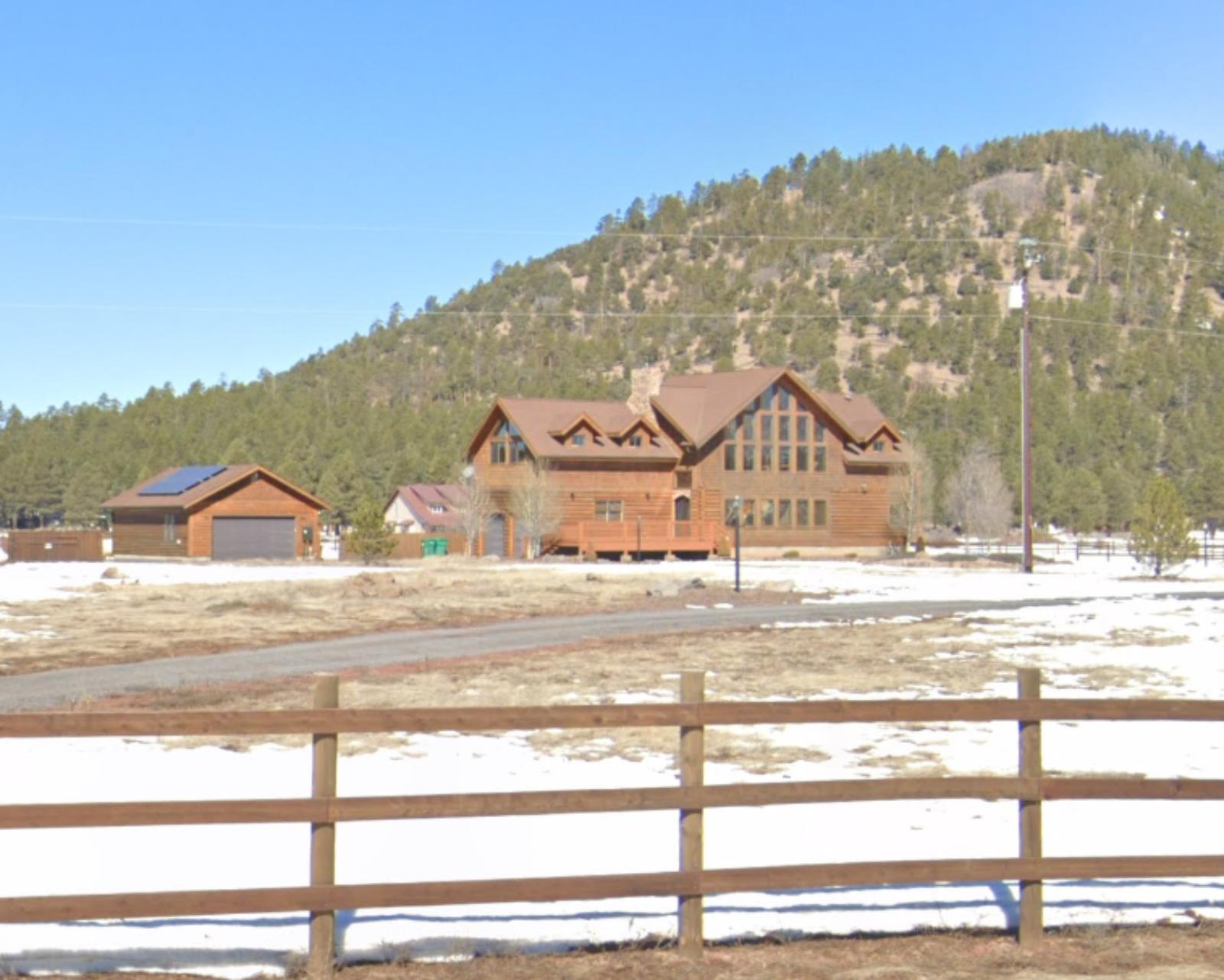
Located along Historic Route 66 between Flagstaff and Williams at approximately 7,000 feet elevation, Parks offers residents authentic mountain living with convenient access to both the Grand Canyon and Flagstaff employment centers. The community’s ponderosa pine forests, cooler climate, and proximity to outdoor recreation make it popular with buyers seeking alternatives to desert living. This strategic location provides the benefits of mountain lifestyle while maintaining reasonable commuting distance to urban amenities.
Parks appeals to buyers seeking larger lots, forest settings, and outdoor recreation opportunities at more affordable prices than established mountain communities. The area’s proximity to the Grand Canyon, Coconino National Forest, and recreational lakes creates year-round outdoor experiences that attract both permanent residents and vacation home owners. Many properties feature rustic mountain architecture, large lots for RV parking and outdoor activities, and forest views that take advantage of the dramatic high-country setting.
11. Queen Creek – 211.5% Home Price Increase Since 2010

- 2010: $206,601
- 2011: $184,235 (−$22,365, −10.83% from previous year)
- 2012: $194,564 (+$10,329, +5.61% from previous year)
- 2013: $243,586 (+$49,021, +25.20% from previous year)
- 2014: $277,465 (+$33,879, +13.91% from previous year)
- 2015: $290,533 (+$13,068, +4.71% from previous year)
- 2016: $314,632 (+$24,100, +8.30% from previous year)
- 2017: $330,492 (+$15,860, +5.04% from previous year)
- 2018: $360,357 (+$29,865, +9.04% from previous year)
- 2019: $388,740 (+$28,383, +7.88% from previous year)
- 2020: $419,998 (+$31,258, +8.04% from previous year)
- 2021: $536,877 (+$116,879, +27.83% from previous year)
- 2022: $681,760 (+$144,884, +26.99% from previous year)
- 2023: $623,846 (−$57,915, −8.49% from previous year)
- 2024: $653,215 (+$29,370, +4.71% from previous year)
- 2025: $643,710 (−$9,505, −1.46% from previous year)
Queen Creek exemplifies explosive suburban growth, with median home values more than tripling from around $207,000 in 2010 to over $643,000 by 2025. The community experienced extraordinary pandemic-era appreciation, with consecutive annual gains approaching 28% and 27% in 2021 and 2022 respectively. This southeast Valley community has transformed from an affordable family destination to one of Arizona’s most expensive suburban markets, reflecting intense demand for new construction and master-planned developments.
Queen Creek – Desert Suburbia’s New Frontier
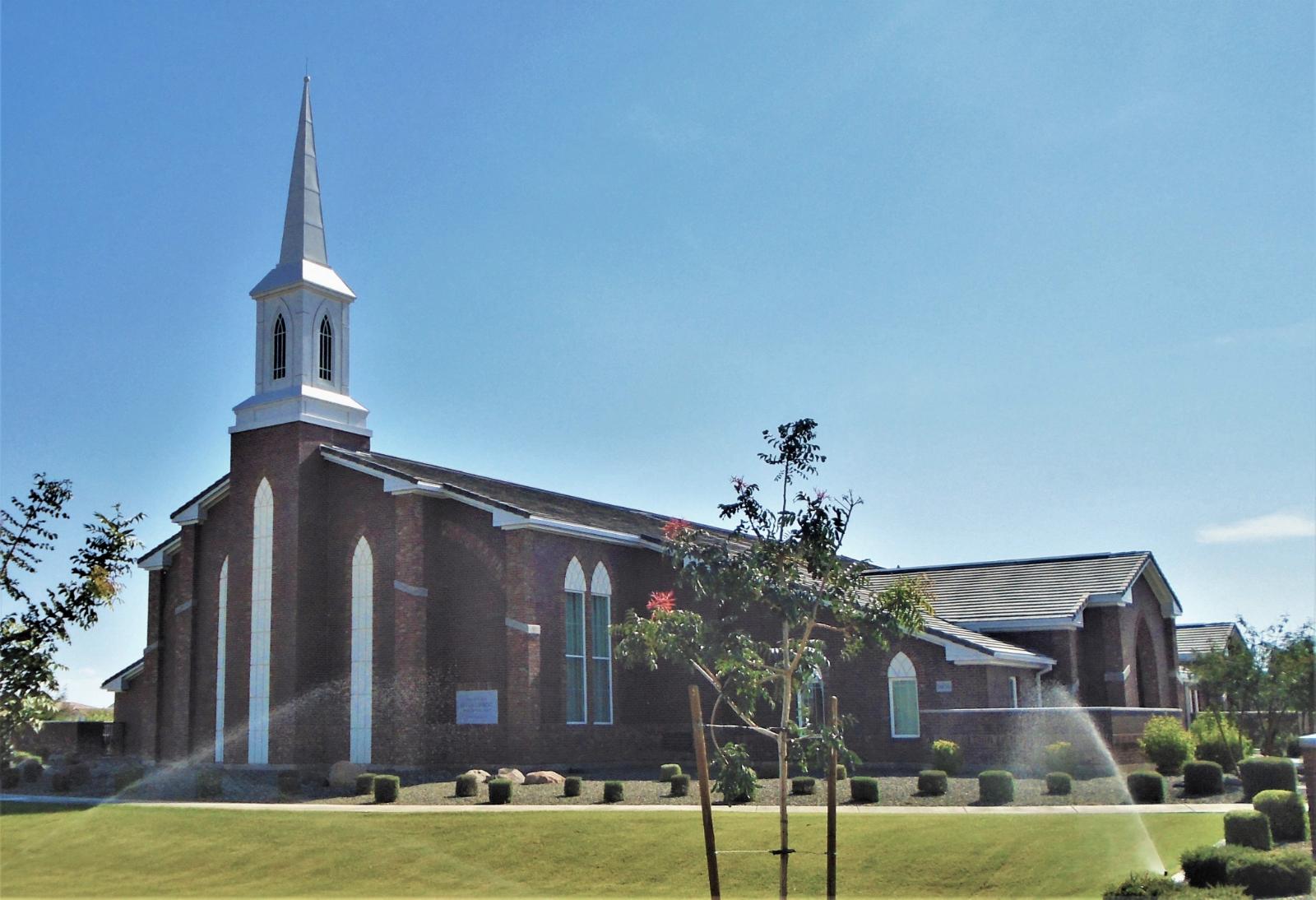
Once a rural agricultural community, Queen Creek has evolved into one of the Phoenix area’s fastest-growing suburbs, featuring master-planned developments, excellent schools, and family-oriented amenities. The town’s location in the southeast Valley provides access to major employment centers while maintaining a newer, less congested feel than established suburbs. This combination of modern infrastructure, quality schools, and family amenities has made Queen Creek increasingly popular with young families and professionals.
Queen Creek’s appeal centers on its newer housing stock, with many communities featuring contemporary architecture, resort-style amenities, and modern floor plans designed for today’s lifestyles. The town’s strategic planning has created a balance between residential development and preserved desert areas, while excellent schools and recreational facilities serve growing families. This master-planned approach to suburban development, combined with proximity to employment centers and ongoing infrastructure investment, sustains strong demand despite recent market volatility.
10. Flagstaff – 147.8% Home Price Increase Since 2010

- 2010: $269,685
- 2011: $227,277 (−$42,408, −15.72% from previous year)
- 2012: $231,159 (+$3,882, +1.71% from previous year)
- 2013: $253,338 (+$22,179, +9.59% from previous year)
- 2014: $283,665 (+$30,327, +11.97% from previous year)
- 2015: $306,599 (+$22,934, +8.08% from previous year)
- 2016: $327,224 (+$20,625, +6.73% from previous year)
- 2017: $359,231 (+$32,006, +9.78% from previous year)
- 2018: $377,818 (+$18,587, +5.17% from previous year)
- 2019: $391,540 (+$13,722, +3.63% from previous year)
- 2020: $415,338 (+$23,798, +6.08% from previous year)
- 2021: $511,082 (+$95,744, +23.05% from previous year)
- 2022: $648,963 (+$137,882, +26.98% from previous year)
- 2023: $617,520 (−$31,443, −4.85% from previous year)
- 2024: $657,606 (+$40,086, +6.49% from previous year)
- 2025: $668,343 (+$10,737, +1.63% from previous year)
Flagstaff’s housing market demonstrates the strong appeal of Arizona’s premier mountain city, with median home values climbing from around $270,000 in 2010 to over $668,000 by 2025. The city experienced dramatic pandemic-era appreciation, with consecutive annual gains of 23% and 27% in 2021 and 2022 respectively. Despite recent market adjustments, Flagstaff maintains its position as northern Arizona’s most expensive and desirable mountain community, reflecting sustained demand from diverse buyer groups.
Flagstaff – Mountain City Excellence
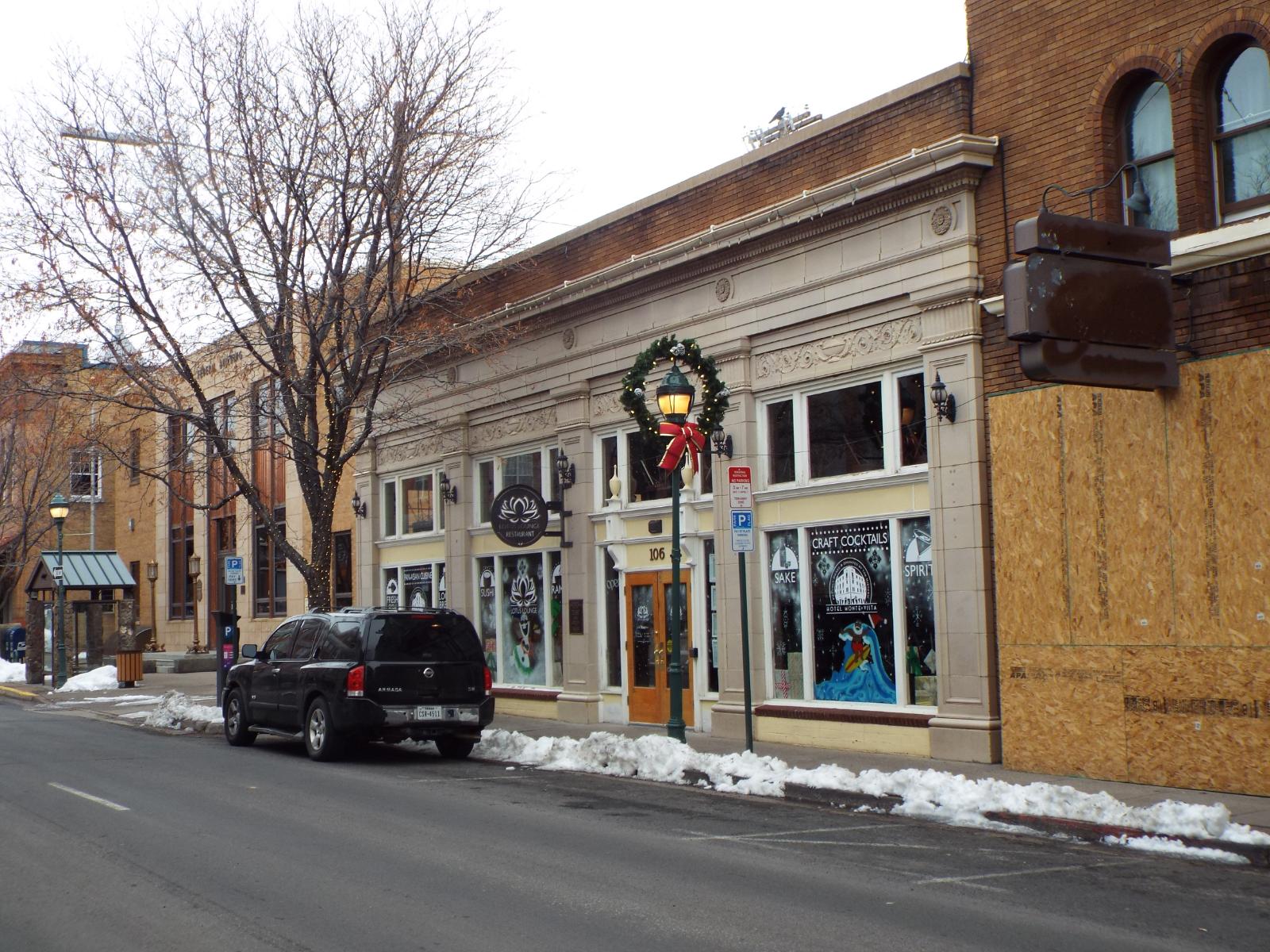
Situated at 7,000 feet elevation in the shadow of the San Francisco Peaks, Flagstaff combines authentic mountain living with university town culture and economic diversity. Home to Northern Arizona University, the city attracts students, faculty, and professionals while serving as a gateway to the Grand Canyon and outdoor recreation opportunities. This combination of educational institutions, natural beauty, and four-season climate creates a unique environment that appeals to diverse demographics seeking mountain lifestyle experiences.
Flagstaff’s appeal extends beyond its university presence to include a thriving downtown core, excellent healthcare facilities, and proximity to world-class outdoor recreation. The city’s location provides access to hiking, skiing, and outdoor adventures while maintaining urban amenities including restaurants, cultural venues, and shopping. Many properties feature mountain architecture designed to complement the alpine setting, while the area’s limited developable land due to forest service ownership creates scarcity that drives premium pricing for available real estate.
9. Fountain Hills – 120.2% Home Price Increase Since 2010

- 2010: $305,252
- 2011: $269,064 (−$36,188, −11.86% from previous year)
- 2012: $283,292 (+$14,228, +5.29% from previous year)
- 2013: $336,141 (+$52,849, +18.66% from previous year)
- 2014: $362,958 (+$26,818, +7.98% from previous year)
- 2015: $364,135 (+$1,177, +0.32% from previous year)
- 2016: $376,870 (+$12,735, +3.50% from previous year)
- 2017: $384,212 (+$7,342, +1.95% from previous year)
- 2018: $400,962 (+$16,751, +4.36% from previous year)
- 2019: $420,957 (+$19,994, +4.99% from previous year)
- 2020: $451,980 (+$31,023, +7.37% from previous year)
- 2021: $553,293 (+$101,314, +22.42% from previous year)
- 2022: $694,943 (+$141,649, +25.60% from previous year)
- 2023: $641,515 (−$53,428, −7.69% from previous year)
- 2024: $674,010 (+$32,496, +5.07% from previous year)
- 2025: $672,048 (−$1,962, −0.29% from previous year)
Fountain Hills demonstrates steady long-term appreciation, with median home values climbing from around $305,000 in 2010 to over $672,000 by 2025. Starting from a higher baseline than most Arizona communities, the town has achieved consistent growth with particularly strong pandemic-era gains exceeding 22% and 25% in consecutive years. Despite recent market corrections, Fountain Hills maintains its position as one of the Phoenix area’s most prestigious desert communities.
Fountain Hills – Desert Oasis Community

Known for its iconic 560-foot fountain and stunning Sonoran Desert setting, Fountain Hills offers residents an upscale desert lifestyle with mountain views and luxury amenities. The master-planned community was designed to preserve the natural desert landscape while providing resort-style living, creating a unique environment that attracts affluent buyers seeking sophisticated desert experiences. The town’s central fountain serves as both a landmark and symbol of the community’s commitment to creating something extraordinary in the desert.
Fountain Hills appeals to buyers seeking luxury desert living with golf courses, hiking trails, and custom homes designed to take advantage of dramatic mountain views. The community’s upscale shopping, dining, and cultural venues create a resort-like atmosphere for residents, while proximity to Scottsdale provides additional amenities and employment opportunities. Many properties feature contemporary southwestern architecture with outdoor living spaces, pools, and mountain views that justify premium pricing in this exclusive desert enclave.
8. New River – 188.7% Home Price Increase Since 2010

- 2010: $267,074
- 2011: $235,214 (−$31,860, −11.93% from previous year)
- 2012: $255,400 (+$20,186, +8.58% from previous year)
- 2013: $305,992 (+$50,592, +19.81% from previous year)
- 2014: $350,129 (+$44,136, +14.42% from previous year)
- 2015: $360,990 (+$10,862, +3.10% from previous year)
- 2016: $389,482 (+$28,492, +7.89% from previous year)
- 2017: $405,701 (+$16,219, +4.16% from previous year)
- 2018: $434,165 (+$28,465, +7.02% from previous year)
- 2019: $457,856 (+$23,690, +5.46% from previous year)
- 2020: $486,454 (+$28,598, +6.25% from previous year)
- 2021: $614,466 (+$128,013, +26.32% from previous year)
- 2022: $771,397 (+$156,930, +25.54% from previous year)
- 2023: $721,825 (−$49,572, −6.43% from previous year)
- 2024: $774,026 (+$52,202, +7.23% from previous year)
- 2025: $771,122 (−$2,905, −0.38% from previous year)
New River exemplifies explosive growth in Phoenix’s northern corridor, with median home values climbing from around $267,000 in 2010 to over $771,000 by 2025 – an increase of nearly 190%. The community experienced extraordinary pandemic-era appreciation, with consecutive annual gains exceeding 26% and 25% in 2021 and 2022 respectively. This desert community has transformed from a rural area to one of the Phoenix metro’s most expensive markets, reflecting intense demand for large lots and desert living.
New River – Desert Living on the Urban Edge
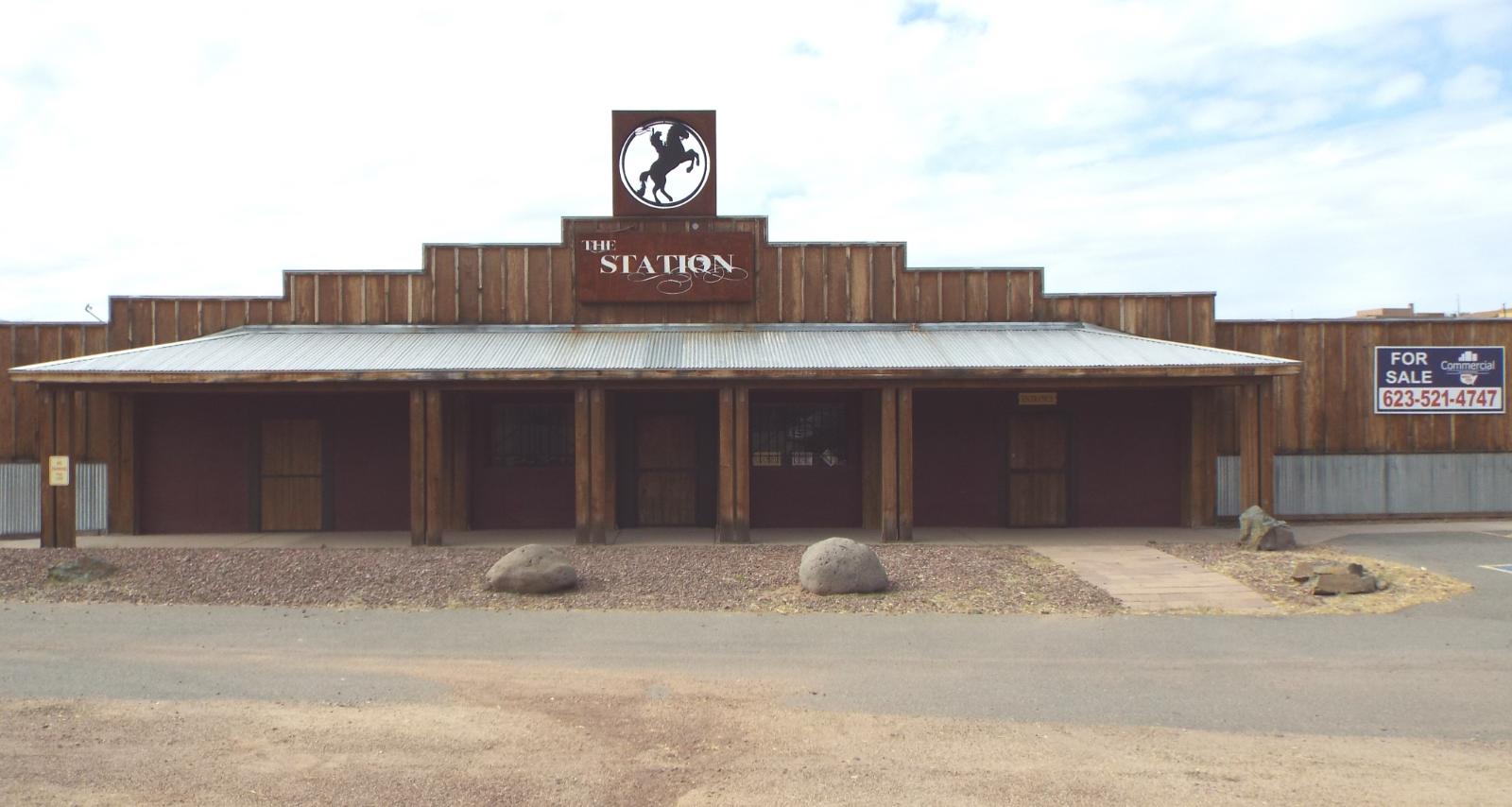
Located in the rugged Sonoran Desert north of Phoenix, New River offers residents authentic desert living with larger lots, mountain views, and proximity to outdoor recreation. The unincorporated community appeals to buyers seeking space, privacy, and a more rural atmosphere while maintaining reasonable access to Phoenix employment centers. This combination of desert lifestyle and metropolitan connectivity has made New River increasingly popular with buyers willing to commute for expanded living space.
New River’s appeal centers on its larger lot sizes, often exceeding an acre, which allow for horse facilities, RV parking, and outdoor recreation opportunities unavailable in typical suburban developments. The area’s desert setting provides hiking trails, off-road recreation, and dramatic mountain views that create a sense of isolation despite proximity to the urban core. Many properties feature custom desert architecture, guest accommodations, and amenities designed to take advantage of the expansive lots and natural setting, creating a unique market niche that commands premium pricing from buyers seeking authentic Arizona desert experiences.
7. Scottsdale – 151.4% Home Price Increase Since 2010

- 2010: $334,892
- 2011: $298,167 (−$36,725, −10.97% from previous year)
- 2012: $321,975 (+$23,808, +7.98% from previous year)
- 2013: $379,917 (+$57,942, +18.00% from previous year)
- 2014: $414,063 (+$34,147, +8.99% from previous year)
- 2015: $418,440 (+$4,376, +1.06% from previous year)
- 2016: $435,094 (+$16,655, +3.98% from previous year)
- 2017: $453,690 (+$18,595, +4.27% from previous year)
- 2018: $480,812 (+$27,123, +5.98% from previous year)
- 2019: $502,231 (+$21,418, +4.45% from previous year)
- 2020: $537,838 (+$35,607, +7.09% from previous year)
- 2021: $670,390 (+$132,553, +24.65% from previous year)
- 2022: $868,006 (+$197,616, +29.48% from previous year)
- 2023: $804,231 (−$63,775, −7.35% from previous year)
- 2024: $849,903 (+$45,672, +5.68% from previous year)
- 2025: $842,053 (−$7,850, −0.92% from previous year)
Scottsdale’s housing market demonstrates the evolution of Arizona’s premier luxury destination, with median home values climbing from around $335,000 in 2010 to over $842,000 by 2025. The city experienced extraordinary pandemic-era appreciation, with consecutive annual gains of nearly 25% and 29% in 2021 and 2022 respectively, briefly pushing median values above $868,000. Despite recent market corrections, Scottsdale maintains its position as Arizona’s luxury capital with sustained demand from affluent buyers worldwide.
Scottsdale – Desert Luxury Capital

Renowned as “The West’s Most Western Town,” Scottsdale combines authentic southwestern heritage with world-class luxury amenities, creating Arizona’s premier upscale destination. The city’s championship golf courses, luxury resorts, high-end shopping, and vibrant nightlife attract affluent residents and visitors from around the globe. This combination of desert beauty, cultural sophistication, and luxury lifestyle has made Scottsdale synonymous with Arizona’s most exclusive real estate market.
Scottsdale’s appeal extends beyond luxury amenities to include diverse neighborhoods ranging from historic Old Town to contemporary high-rises and exclusive desert compounds. The city’s strategic location provides stunning mountain views, world-class dining, and proximity to Sky Harbor International Airport, making it attractive to both full-time residents and seasonal visitors. Many properties feature resort-style amenities, custom architecture, and premium locations that command some of Arizona’s highest prices, reflecting the city’s status as a global luxury destination.
6. Rio Verde – 99.5% Home Price Increase Since 2010

- 2010: $423,388
- 2011: $391,054 (−$32,334, −7.64% from previous year)
- 2012: $395,066 (+$4,012, +1.03% from previous year)
- 2013: $427,759 (+$32,693, +8.28% from previous year)
- 2014: $458,211 (+$30,453, +7.12% from previous year)
- 2015: $468,421 (+$10,210, +2.23% from previous year)
- 2016: $468,032 (−$389, −0.08% from previous year)
- 2017: $487,740 (+$19,708, +4.21% from previous year)
- 2018: $499,022 (+$11,282, +2.31% from previous year)
- 2019: $524,924 (+$25,902, +5.19% from previous year)
- 2020: $568,859 (+$43,935, +8.37% from previous year)
- 2021: $669,986 (+$101,127, +17.78% from previous year)
- 2022: $859,199 (+$189,213, +28.24% from previous year)
- 2023: $822,052 (−$37,148, −4.32% from previous year)
- 2024: $850,307 (+$28,255, +3.44% from previous year)
- 2025: $844,462 (−$5,845, −0.69% from previous year)
Rio Verde’s housing market reflects the appreciation of an exclusive desert community, with median home values climbing from around $423,000 in 2010 to over $844,000 by 2025. Starting from a higher baseline than most Arizona communities, the area achieved its strongest growth during 2022 when prices jumped more than 28% in a single year. Despite recent market adjustments, Rio Verde maintains its position as one of Arizona’s most expensive communities, reflecting sustained demand for luxury desert living.
Rio Verde – Elite Desert Enclave
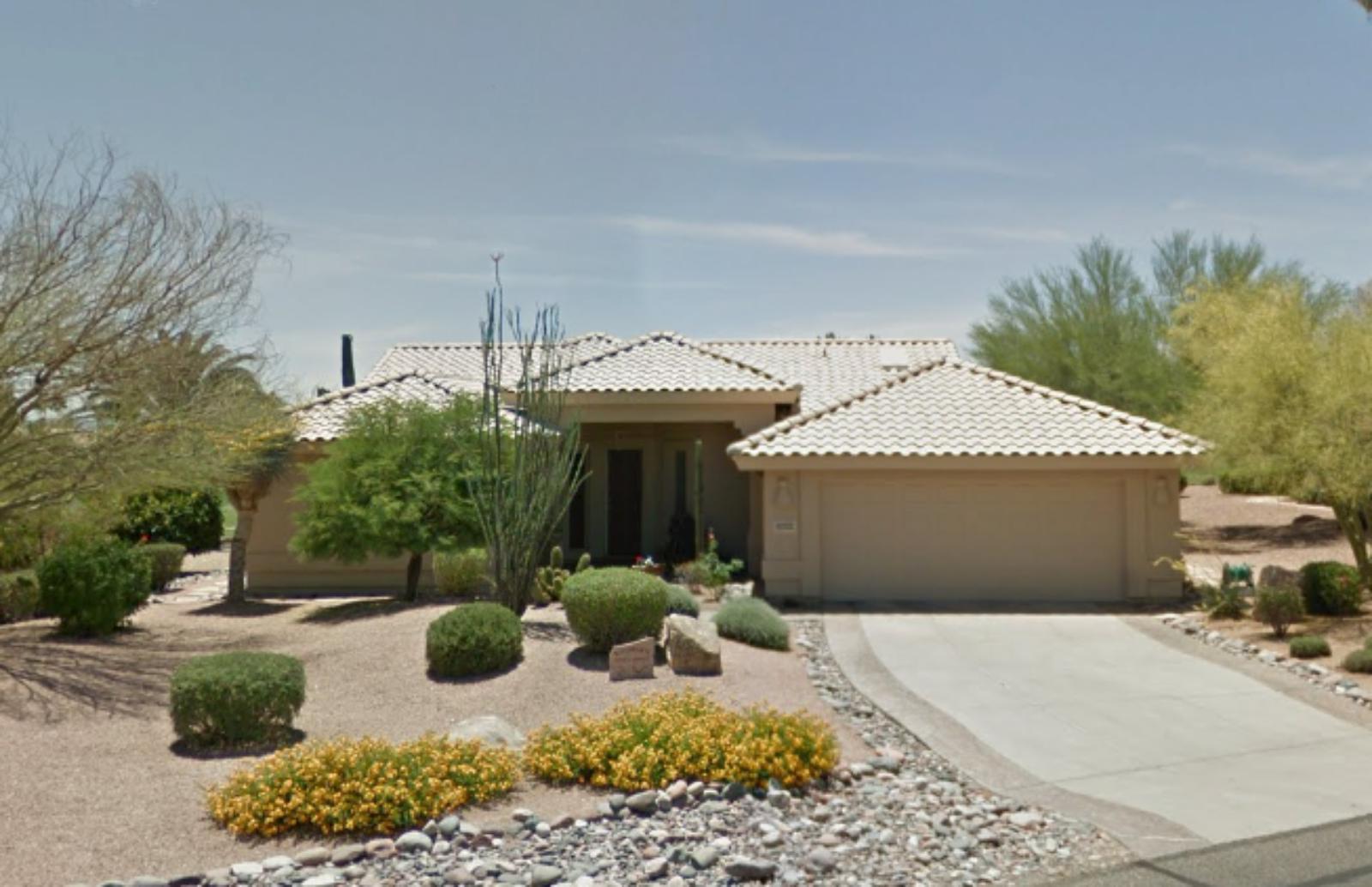
Located in the Sonoran Desert foothills northeast of Scottsdale, Rio Verde represents one of Arizona’s most exclusive residential areas with custom estates, horse properties, and stunning desert mountain views. The unincorporated community attracts affluent buyers seeking privacy, luxury, and authentic desert living on large acreage lots. This combination of natural beauty, exclusive character, and proximity to Scottsdale’s amenities has made Rio Verde a preferred destination for luxury home buyers.
Rio Verde’s appeal centers on its rural character within reach of urban amenities, with many properties featuring custom architecture, guest accommodations, and horse facilities on multi-acre lots. The area’s desert setting provides hiking trails, mountain views, and a sense of isolation despite proximity to Scottsdale’s shopping, dining, and cultural venues. The community’s limited development potential and large lot requirements create scarcity that sustains premium pricing for buyers seeking authentic Arizona luxury desert experiences.
5. Sedona – 149.3% Home Price Increase Since 2010

- 2010: $366,515
- 2011: $335,852 (−$30,663, −8.37% from previous year)
- 2012: $339,521 (+$3,670, +1.09% from previous year)
- 2013: $375,282 (+$35,760, +10.53% from previous year)
- 2014: $409,917 (+$34,635, +9.23% from previous year)
- 2015: $426,952 (+$17,035, +4.16% from previous year)
- 2016: $445,484 (+$18,532, +4.34% from previous year)
- 2017: $458,032 (+$12,548, +2.82% from previous year)
- 2018: $488,245 (+$30,213, +6.60% from previous year)
- 2019: $531,428 (+$43,184, +8.84% from previous year)
- 2020: $568,439 (+$37,011, +6.96% from previous year)
- 2021: $715,816 (+$147,377, +25.93% from previous year)
- 2022: $943,087 (+$227,271, +31.75% from previous year)
- 2023: $883,638 (−$59,449, −6.30% from previous year)
- 2024: $937,182 (+$53,544, +6.06% from previous year)
- 2025: $914,126 (−$23,056, −2.46% from previous year)
Sedona’s housing market exemplifies the premium pricing power of one of America’s most beautiful destinations, with median home values climbing from around $367,000 in 2010 to over $914,000 by 2025. The iconic red rock city experienced extraordinary pandemic-era appreciation, with consecutive annual gains of nearly 26% and 32% in 2021 and 2022 respectively, briefly pushing median values above $943,000. Despite recent adjustments, Sedona maintains its position among Arizona’s most expensive markets, reflecting global demand for this unique destination.
Sedona – Red Rock Paradise

Internationally recognized for its stunning red rock formations and spiritual energy, Sedona attracts visitors and residents from around the world seeking natural beauty and tranquil desert living. The city’s dramatic landscape, combined with world-class spas, art galleries, and outdoor recreation, creates a unique environment that commands premium prices from buyers seeking extraordinary natural settings. This combination of iconic beauty and lifestyle amenities has made Sedona one of America’s most sought-after real estate markets.
Sedona’s appeal extends beyond its natural beauty to include a thriving arts community, luxury resorts, and outdoor recreation opportunities that attract diverse demographics. The city’s limited developable land due to surrounding national forest and geological constraints creates scarcity that drives premium pricing for available properties. Many homes feature contemporary southwestern architecture designed to complement the red rock setting, while luxury amenities and stunning views justify some of Arizona’s highest real estate prices.
4. Fort McDowell – 99.7% Home Price Increase Since 2013

- 2013: $499,510
- 2014: $526,200 (+$26,690, +5.34% from previous year)
- 2015: $541,130 (+$14,931, +2.84% from previous year)
- 2016: $557,421 (+$16,291, +3.01% from previous year)
- 2017: $562,574 (+$5,153, +0.92% from previous year)
- 2018: $595,872 (+$33,298, +5.92% from previous year)
- 2019: $631,151 (+$35,279, +5.92% from previous year)
- 2020: $679,150 (+$47,999, +7.61% from previous year)
- 2021: $832,487 (+$153,336, +22.58% from previous year)
- 2022: $1,023,269 (+$190,782, +22.92% from previous year)
- 2023: $927,193 (−$96,076, −9.39% from previous year)
- 2024: $1,013,587 (+$86,394, +9.32% from previous year)
- 2025: $997,352 (−$16,235, −1.60% from previous year)
Fort McDowell demonstrates strong appreciation for an exclusive community, with median home values climbing from around $500,000 in 2013 to nearly $997,000 by 2025. The community experienced dramatic pandemic-era growth, with consecutive annual gains exceeding 22% in both 2021 and 2022, briefly pushing values above $1 million. Despite recent market volatility, Fort McDowell maintains its position among Arizona’s most expensive communities, reflecting sustained demand for this unique desert location.
Fort McDowell – Sonoran Desert Exclusivity

Located on the Fort McDowell Yavapai Nation in the Verde River valley northeast of Phoenix, this exclusive community offers residents luxury desert living with casino resort amenities and stunning Sonoran Desert views. The area’s unique status as tribal land creates limited housing inventory, while the combination of luxury golf courses, gaming facilities, and desert beauty attracts affluent buyers seeking distinctive Arizona experiences.
Fort McDowell’s appeal centers on its exclusive character and recreational amenities, including championship golf courses and resort facilities that create a luxury desert lifestyle. The community’s limited development potential and unique tribal land status create scarcity that drives premium pricing for available properties. Many homes feature contemporary desert architecture with mountain views, while proximity to casino gaming, fine dining, and entertainment venues adds to the area’s distinctive appeal for luxury home buyers seeking unique Arizona experiences.
3. Cave Creek – 150.1% Home Price Increase Since 2010

- 2010: $417,359
- 2011: $358,498 (−$58,860, −14.10% from previous year)
- 2012: $383,812 (+$25,313, +7.06% from previous year)
- 2013: $441,613 (+$57,801, +15.06% from previous year)
- 2014: $479,805 (+$38,193, +8.65% from previous year)
- 2015: $488,646 (+$8,840, +1.84% from previous year)
- 2016: $514,243 (+$25,598, +5.24% from previous year)
- 2017: $532,327 (+$18,084, +3.52% from previous year)
- 2018: $561,184 (+$28,857, +5.42% from previous year)
- 2019: $587,293 (+$26,109, +4.65% from previous year)
- 2020: $623,053 (+$35,761, +6.09% from previous year)
- 2021: $790,096 (+$167,042, +26.81% from previous year)
- 2022: $1,008,807 (+$218,711, +27.68% from previous year)
- 2023: $951,445 (−$57,362, −5.69% from previous year)
- 2024: $1,043,462 (+$92,016, +9.67% from previous year)
- 2025: $1,043,808 (+$346, +0.03% from previous year)
Cave Creek’s housing market demonstrates the explosive appreciation potential of Arizona’s luxury desert communities, with median home values climbing from around $417,000 in 2010 to over $1.04 million by 2025. The community experienced extraordinary pandemic-era growth, with consecutive annual gains exceeding 26% and 27% in 2021 and 2022 respectively, pushing it firmly into the million-dollar median range. This authentic western town has become one of Arizona’s most exclusive and expensive real estate markets.
Cave Creek – Authentic Western Luxury

Known for preserving its authentic western character while accommodating luxury development, Cave Creek offers residents a unique combination of cowboy heritage and upscale desert living. The town’s historic downtown features saloons, western shops, and restaurants that maintain its frontier atmosphere, while surrounding desert areas host luxury custom homes on large acreage lots. This balance between authenticity and luxury has made Cave Creek one of Arizona’s most distinctive and sought-after communities.
Cave Creek’s appeal extends beyond its western character to include stunning Sonoran Desert scenery, world-class golf courses, and proximity to Scottsdale’s amenities. The community attracts affluent buyers seeking authentic Arizona experiences, with many properties featuring custom southwestern architecture, horse facilities, and expansive lots that take advantage of dramatic desert mountain views. The town’s commitment to preserving its western heritage while accommodating luxury development creates a unique market niche that commands premium pricing from buyers seeking genuine Arizona lifestyle experiences.
2. Carefree – 153.7% Home Price Increase Since 2010

- 2010: $507,547
- 2011: $478,302 (−$29,245, −5.76% from previous year)
- 2012: $520,438 (+$42,135, +8.81% from previous year)
- 2013: $581,131 (+$60,693, +11.66% from previous year)
- 2014: $626,814 (+$45,683, +7.86% from previous year)
- 2015: $631,028 (+$4,214, +0.67% from previous year)
- 2016: $666,762 (+$35,735, +5.66% from previous year)
- 2017: $671,849 (+$5,087, +0.76% from previous year)
- 2018: $696,567 (+$24,718, +3.68% from previous year)
- 2019: $734,879 (+$38,311, +5.50% from previous year)
- 2020: $769,003 (+$34,124, +4.64% from previous year)
- 2021: $985,297 (+$216,294, +28.13% from previous year)
- 2022: $1,265,259 (+$279,962, +28.41% from previous year)
- 2023: $1,192,930 (−$72,328, −5.72% from previous year)
- 2024: $1,269,918 (+$76,987, +6.45% from previous year)
- 2025: $1,287,394 (+$17,477, +1.38% from previous year)
Carefree’s housing market exemplifies luxury desert living at its finest, with median home values climbing from around $508,000 in 2010 to nearly $1.29 million by 2025. The exclusive community experienced extraordinary pandemic-era appreciation, with consecutive annual gains exceeding 28% in both 2021 and 2022, briefly pushing median values above $1.27 million. Starting from an already elevated baseline, Carefree has maintained its position as one of Arizona’s most expensive communities, reflecting sustained demand for luxury desert living.
Carefree – Desert Sophistication
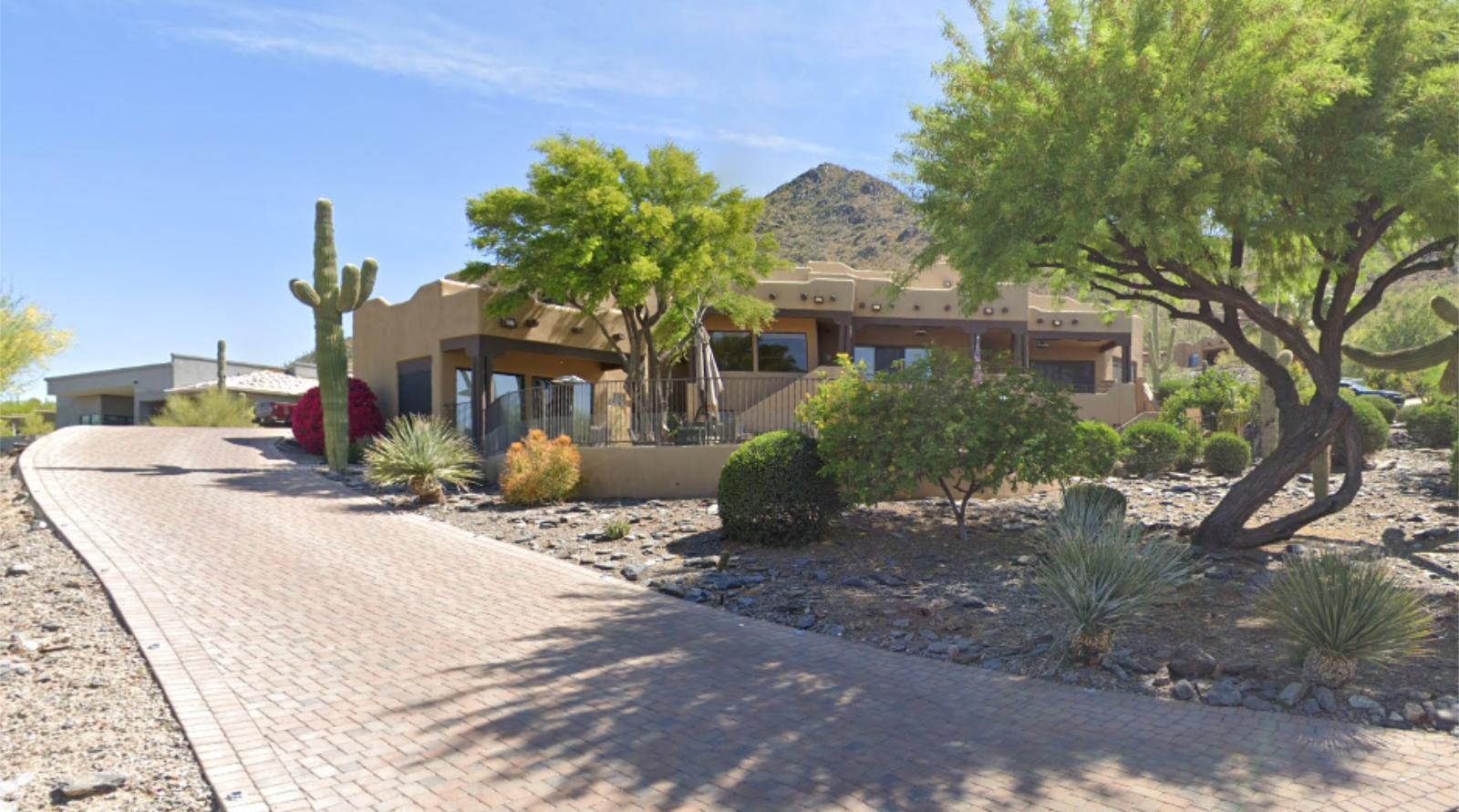
Designed as a master-planned community in the 1950s, Carefree combines sophisticated desert living with stunning natural beauty in the foothills north of Scottsdale. The town’s unique character includes distinctive architecture, luxury amenities, and carefully preserved desert landscapes that create an exclusive environment for affluent residents. This combination of thoughtful planning, natural beauty, and luxury lifestyle has made Carefree synonymous with Arizona’s most refined desert living experiences.
Carefree’s appeal centers on its exclusive character and resort-like amenities, including championship golf courses, luxury spas, and fine dining establishments that cater to discerning residents and visitors. The community’s strategic location provides stunning views of Black Mountain and the surrounding Sonoran Desert, while proximity to Scottsdale offers additional cultural and shopping opportunities. Many properties feature custom contemporary architecture with infinity pools, outdoor kitchens, and entertainment areas designed to showcase the dramatic desert setting, justifying some of Arizona’s highest real estate prices.
1. Paradise Valley – 175.3% Home Price Increase Since 2010

- 2010: $1,187,708
- 2011: $1,040,872 (−$146,835, −12.36% from previous year)
- 2012: $1,117,746 (+$76,873, +7.39% from previous year)
- 2013: $1,323,139 (+$205,393, +18.38% from previous year)
- 2014: $1,472,332 (+$149,193, +11.28% from previous year)
- 2015: $1,463,887 (−$8,445, −0.57% from previous year)
- 2016: $1,456,065 (−$7,822, −0.53% from previous year)
- 2017: $1,478,169 (+$22,103, +1.52% from previous year)
- 2018: $1,533,187 (+$55,018, +3.72% from previous year)
- 2019: $1,581,742 (+$48,555, +3.17% from previous year)
- 2020: $1,681,252 (+$99,509, +6.29% from previous year)
- 2021: $2,108,679 (+$427,427, +25.42% from previous year)
- 2022: $2,912,296 (+$803,618, +38.11% from previous year)
- 2023: $2,693,475 (−$218,821, −7.51% from previous year)
- 2024: $2,965,282 (+$271,806, +10.09% from previous year)
- 2025: $3,269,452 (+$304,170, +10.26% from previous year)
Paradise Valley stands alone as Arizona’s most expensive community, with median home values climbing from nearly $1.19 million in 2010 to over $3.27 million by 2025. The exclusive enclave experienced unprecedented pandemic-era appreciation, with a staggering 38% gain in 2022 that pushed median values briefly above $2.9 million. Even starting from an already elevated baseline of over $1 million, Paradise Valley has achieved extraordinary growth that reflects its status as Arizona’s premier luxury destination.
Paradise Valley – Arizona’s Ultimate Luxury Destination

Renowned as one of America’s most exclusive residential communities, Paradise Valley represents the pinnacle of Arizona luxury living with custom estates, world-class resorts, and stunning mountain views. The town’s strict zoning requirements ensure large lot sizes and architectural standards that preserve its exclusive character, while its location between Phoenix and Scottsdale provides convenient access to urban amenities. This combination of exclusivity, natural beauty, and strategic location has made Paradise Valley a preferred destination for celebrities, executives, and luxury home buyers from around the world.
Paradise Valley’s appeal transcends typical luxury markets through its unique combination of privacy, prestige, and natural beauty, with many properties featuring resort-style amenities, guest accommodations, and dramatic mountain views. The community’s world-famous resorts, championship golf courses, and high-end shopping create a lifestyle that attracts international buyers seeking the ultimate Arizona experience. Properties often span multiple acres with custom architecture, infinity pools, and entertainment facilities that justify median prices exceeding $3 million, making Paradise Valley not just Arizona’s most expensive community, but one of America’s premier luxury real estate markets.




